Amid increasing international recognition of how important it is to halt and recover natural loss (See *1), at the 15th Meeting of the Conference of the Parties to the UN Convention on Biological Diversity (COP15) that convened in December 2022, the “Kunming-Montreal Global Biodiversity Framework” (GBF) was adopted as the first international targets for biodiversity since the Aichi Biodiversity Targets of 2010.
Under the GBF, based on the 2050 vision of “Living in harmony with nature,” the mission of striving for “nature positive”*2 as defined by “taking urgent action to halt and reverse biodiversity loss to put nature on a path to recovery” by the year 2030 was set forth along with 23 concrete targets. Those targets include the assessment and disclosure of risks, dependencies and impacts on biodiversity by corporations in their operations in order to reduce negative impact on biodiversity and expand positive impact.
Based on this, we have begun to identify nature-related issues related to our business and our contribution to nature positive.
| Ranking of severity of risks in the next decade | |
|---|---|
| 1 | Extreme weather events |
| 2 | Critical change to Earth systems |
| 3 | Biodiversity loss and ecosystem collapse |
| 4 | Natural resource shortages |
| 5 | Misinformation and disinformation |
| 6 | Adverse outcomes of AI technologies |
| 7 | Involuntary migration |
| 8 | Cyber insecurity |
| 9 | Societal polarization |
| 10 | Pollution |
Source: WWF
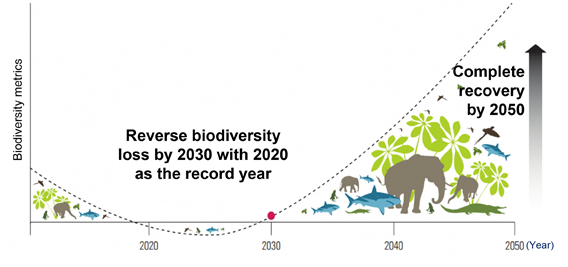

The TNFD Framework consists of 14 disclosure recommendations organized into four pillars and six "general requirements," which are basic concepts that apply across the four pillars, and recommends disclosure on these items.
This table can be scrolled horizontally
| General requirements | |||
|---|---|---|---|
| 1. Application of materiality 2. Scope of disclosures 3. Location of nature-related issues 4. Integration with other sustainability-related disclosures 5. The time horizons considered 6. Engagement with Indigenous Peoples, Local Communities and affected stakeholders |
|||
| Governance | Strategy | Risk & impact management | Metrics & targets |
| Disclose the organisation’s governance of nature-related dependencies, impacts, risks and opportunities. | Disclose the effects of nature-related dependencies, impacts, risks and opportunities on the organisation’s business model, strategy and financial planning where such information is material. | Describe the processes used by the organisation to identify, assess, prioritise and monitor nature-related dependencies, impacts, risks and opportunities. | Disclose the metrics and targets used to assess and manage material nature-related dependencies, impacts, risks and opportunities. |
| A) Board Oversight of Nature-Related Dependencies, Impacts, Risks, and Opportunities B) Management's role in assessing and managing nature-related dependencies/impacts, risks, and opportunities C) Stakeholder engagement in assessing and responding to nature-related dependencies/impacts, risks, and opportunities |
A) Identified nature-related dependencies/impacts, risks, and opportunities B) Effects of dependencies/impacts, risks/opportunities on strategy and financial planning C) Resilience of the strategy to risks/opportunities based on scenarios D) Locations of assets and activities that meet criteria for priority areas |
A) Processes for identifying, assessing, and prioritizing dependencies, impacts, risks, and opportunities in the direct operations/upstream and downstream value chains B) Process for managing dependencies, impacts, risks, and opportunities C) Processes for identifying, assessing, and managing nature-related risks integrated into enterprise-wide risk management |
A) Metrics used to assess and manage material nature-related risks/opportunities B) Metrics used to assess and manage dependencies/impacts C) Targets used to manage nature-related dependencies/impacts and risks/opportunities and the performance against these. |
The table below summarizes which of the 14 disclosure recommendations shown on the previous page corresponds to each of the LEAP phases of the TNFD. In this report, the results of our review with reference to the LEAP approach are disclosed in accordance with the General Requirements and the TNFD Disclosure Recommendations. The corresponding disclosure pillar and each phase of the LEAP are indicated by icons in the upper right-hand corner of each slide.
This table can be scrolled horizontally
| Locate The interface with nature |
Evaluate Dependencies & impacts |
Assess Risks & opportunities |
Prepare To respond & report |
|---|---|---|---|
| L1: Span of the business model and value chain L2: Dependency and impact screening L3: Interface with nature L4: Interface with sensitive locations |
E1: Identification of environmental assets, ecosystem services and impact drivers E2: Identification of dependencies and impacts E3: Dependency and impact measurement E4: Impact materiality assessment |
A1: Risk and opportunity identification A2: Adjustment of existing risk mitigation and risk and opportunity management A3: Risk and opportunity measurement and prioritisation A4: Risk and opportunity materiality assessment |
P1: Strategy and resource allocation plans P2: Target setting and performance management P3: Reporting P4: Presentation |
|
|
|
|
| Disclosure recommendations corresponding to LEAP | |||
|
|
|
|
As the Group’s businesses are founded on the premise of depending on and impacting nature in a variety of aspects, over time, the Group has continuously implemented initiatives to limit its negative impact on and exert a positive impact on nature.
In preparing this report, we followed the four pillars of the TNFD Recommended Disclosure as well as conducted examinations for each pillar in line with the LEAP approach provided by the TNFD,
This table can be scrolled horizontally
| TNFD Recommended Disclosure |
TNFD Recommended Items for Disclosure | Information disclosed recently (TNDF disclosure at the Company) |
|---|---|---|
| Governance |
|
|
| Strategy |
|
|
| Risk & Impact Management |
|
|
| Metrics & targets | Measured metrics and targets for evaluating and managing nature-related dependencies, impacts, risks and opportunities and performance relative to targets |
|
*: The greater Shibuya area refers to the area within a 2.5-km radius from Shibuya Station as set forth in the Group’s community development strategy.
In the Report, the greater Shibuya area has been set forth as a priority area.
Based on tools such as ENCORE (see Glossary), we reviewed an overview of dependencies and impacts in our entire business.
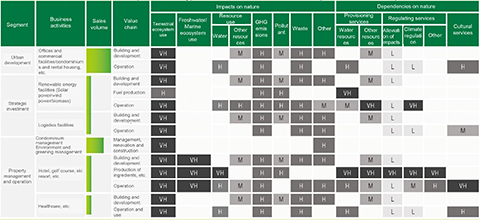
Impacts
Land modification/occupation, etc. upon real estate development and operation
Terrestrial ecosystem use
Dependencies
Supply services for resources, etc.
and cultural services for nature-based comfort, landscapes, etc.
Business scale (Sales volume)
We analyzed various metrics regarding the intactness and biodiversity importance and water stress as they pertain to the addresses of properties held and operated by the Group.
Then we selected the "Greater Shibuya Area" and "14 areas including resort facilities" as our priority areas.
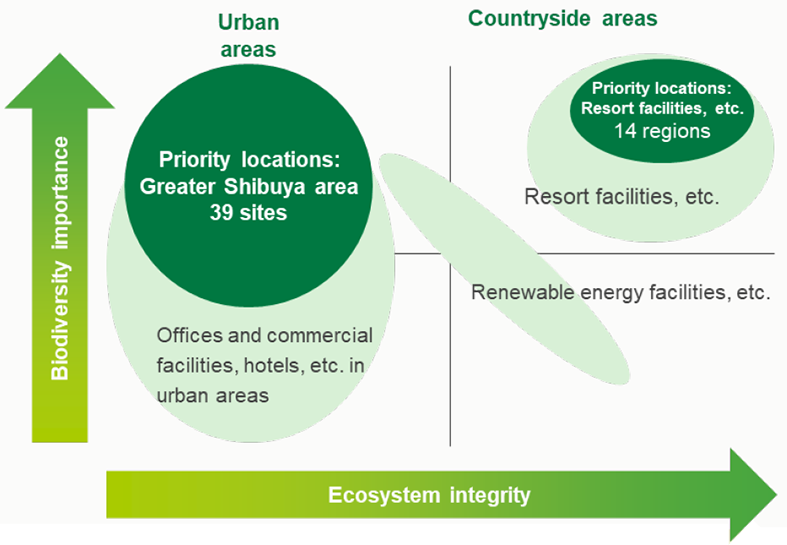
(Priority location recently examined)
As a result of performing quantitative analysis using Think Nature’s analysis tools, we found that biodiversity regenerative effects before and after the building of Group properties in the greater Shibuya area turned positive starting with properties from FY2012 and beyond. At properties completed in recent years, initiatives aimed at ensuring the quantity and quality of greening, such as securing green space area largely through urban redevelopment systems and selecting native species of trees for planting, have shown positive effects, and the community planning efforts of the Group have been recognized as contributing to nature positive.
In particular, the quantity and quality of greening at target properties under our Redevelopment Business have been trending highly relative to facilities up to this point. Going forward, we will continue to promote the planning of communities that coexist with nature.
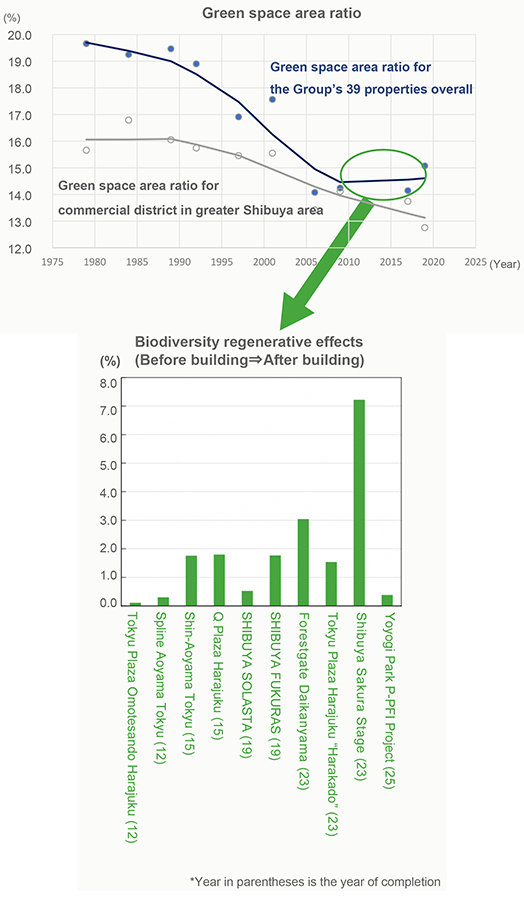
Based on the dependency/impact analysis of our urban development business centered on the Greater Shibuya Area and other business, we have summarized the nature-related physical and transition risks and opportunities that we currently consider to be particularly important for our business. We found that while various nature-related risks are expected, we also expect to capture many business opportunities.
In the business of real estate that the Group is involved in, given the process between development and operation spans a long period of time and that numerous parties have involvement in that process, we believe that it is necessary to work together with our stakeholders to tackle nature-related issues in our entire supply chain.
| Item | Initiatives |
|---|---|
| Urban Development Business | Community planning, greening technology, planting management, etc. |
| Hotel and Leisure Business | Forest management, protection of rare species, etc. |
| Other | Invasive alien species countermeasures, contamination and waste reduction, resource circulation, water usage reduction, etc. |
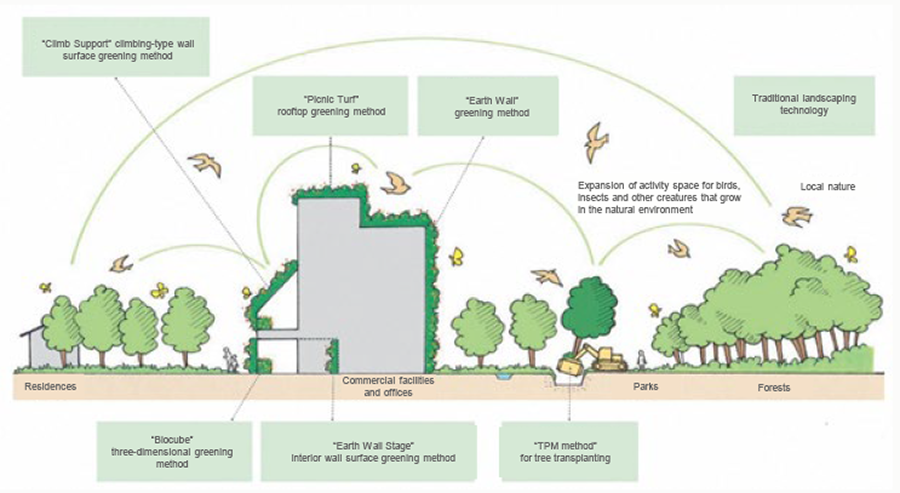 Image representation of building greening
Image representation of building greeningIn addition to the greater Shibuya area that we recently performed analysis for, we also intend on performing more detailed analysis of dependencies, impacts, risks and opportunities related to the Hotel and Leisure Business, which we operate in other priority locations. Additionally, based on a scenario analysis approach, we will further deepen analysis of the importance of risks and opportunities and the impacts on the businesses and finances of the Group as well as examine the ideal form of nature-related metrics and targets based on international trends as we move forward.
The TNFD presents six "general requirements" that should be applied across the disclosure, and recommends that companies clarify their position on these items and apply them across the disclosure. Our basic position on each of the General Requirements is described below.
To formulate the Long-term Management Policy, the Group identified materialities based on their importance to the Group's management and to its stakeholders. One of these is "Create a Sustainable Environment," which includes nature-related themes, and this report discloses information focusing on nature-related issues.
Regarding dependencies and impacts on nature, we explain what is considered material from the perspective of the Group's management and stakeholders. Risks and opportunities are described in terms of what is considered important from the perspective of the impact on the Group's management.
In this disclosure, we provide an overview of dependencies and impacts on nature, risks and opportunities for all business areas and major value chain stages, as well as a review of priority areas for all locations where we directly own and operate properties. In the priority area, the Greater Shibuya Area, we provide a more detailed explanation of dependencies, impacts, risks and opportunities based on our analysis of the area.
For areas other than the urban development business, such as the hotel and leisure business, where nature-related dependencies, impacts, risks and opportunities are considered important, we plan to proceed with detailed study and disclosure in the future.
Among the items recommended for disclosure, scenario analysis is not included in this disclosure. We plan to deepen our consideration of risks and opportunities based on scenarios in the future.
We recognize that nature-related issues vary from region to region. Therefore, for the Greater Shibuya Area, which we have identified as a region of particular priority in terms of nature-related issues for the group, we have examined dependencies, impacts, risks and opportunities based on the characteristics of the region and the nature involved. In the future, we will further consider resort facilities, another priority area.
We recognize that nature-related issues are closely related to various other sustainability issues such as climate change, human rights, and relationships with local communities. For example, preservation of forests and urban greenery can lead to adaptation to the effects of climate change, such as the severity of disasters and the heat island effect, and to climate change mitigation through the absorption of greenhouse gases. Recognizing the relevance of these nature-related issues to other sustainability issues, we will consider how to understand nature-related issues and how to disclose them in an integrated manner.
In this disclosure, we examine dependencies, impacts, risks, and opportunities over short- and medium- to long-term time horizons. As we continue to expand and deepen our region-based analysis, we will further consider what time horizon should be set to appropriately capture the Group's nature-related issues.
As explained in the "Governance" pillar, we have developed a human rights policy and have identified key human rights issues, including the rights of local communities, including indigenous peoples, and are working to prevent or mitigate human rights impacts by promoting the "Sustainable Procurement Policy" to suppliers. In addition, we strive to respect the human rights of stakeholders related to our business activities in new project candidates and existing operations, and we engage with local stakeholders in our nature-related initiatives.
Under “governance” by the TNFD, it is recommended that corporations explain oversight by the Board of Directors and the roles of management as they pertain to nature-related dependencies, impacts, risks and opportunities.
The nature-related governance framework at the Company is as follows.
Having espoused “environmental management” as a group policy as part of its long-term management policy
the Company is carrying out environmental initiatives through its businesses with a “decarbonized society,” a “recycling-based society,” and “biodiversity” under its Medium-Term Management Plan.

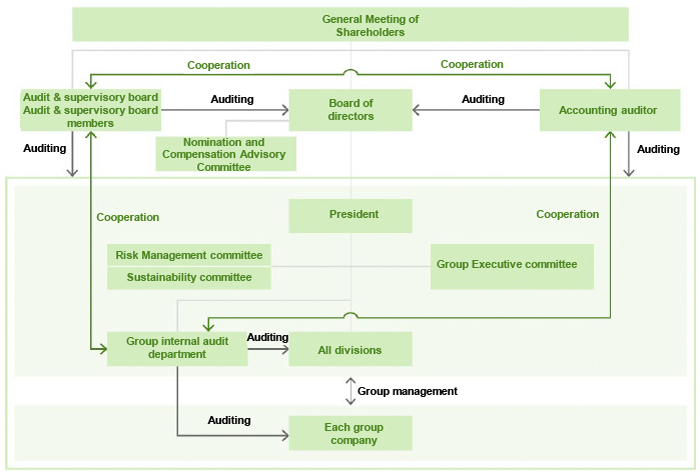
TNFD emphasizes the importance of effective and meaningful engagement with indigenous peoples, local communities, and affected stakeholders with a high connection to nature in assessing and managing nature-related dependencies, impacts, risks, and opportunities, and recommends that this be disclosed in the "Governance" aspect of our work. Below we present our engagement with local communities as it relates to our relationship with nature through our operations including the supply chain.
The Group recognizes that respecting the human rights of employees and all stakeholders involved in its businesses is an essential requirement of a company with global operations and an expectation placed in all companies. Then, we formulated the “Tokyu Fudosan Holdings Group Human Rights Policy”. It is based on this belief that we support the Universal Declaration of Human Rights and other international human rights doctrines and conduct with our suppliers to carry out business activities that fully respect human rights.
We have identified several key human rights issues, including the rights of local communities and indigenous peoples, and forced labor and child labor, including in the supply chain, and are working to establish a human rights due diligence mechanism and to prevent and mitigate human rights risks.
For potential new projects or existing operations, we continuously assess risks related to respect for human rights in accordance with our risk management process to ensure that we respect the human rights of stakeholders involved in the project itself or in our business activities in the community. In procurement, we have established a "Sustainable Procurement Policy" and require our suppliers to respect human rights, as well as promote the procurement of sustainable timber formwork.
Because of the significant impact on local communities and stakeholders through its wide-ranging business operations, the Group believes it is necessary to work closely with a variety of stakeholders and promotes dialogue with its employees, local communities, business partners, customers, and other stakeholders. Specific examples of engagement are presented on the next page.
In the Greater Shibuya area, Tokyu Land Corporation, as the secretariat of the Shibuya Area Management Council consisting of the public and private sectors, is engaged in rule-making and community development activities related to community development, including the formulation of local rules for outdoor advertising, disaster and crime prevention measures, information dissemination, and the creation of a lively atmosphere.
In particular, in terms of natural disasters, taking into account the unique characteristics of Shibuya Station, public and private sector stakeholders regularly conduct flooding drills at the underground plaza to guide customers to evacuate and confirm flood countermeasures in case of an emergency. In this way, we are creating a system and rules for peace of mind in the event of a natural disaster.
The company has also concluded a “Comprehensive Collaborative Agreement on Local Disaster Prevention in Shibuya Ward” with Shibuya Ward, and is working to improve the local disaster preparedness in Shibuya Ward. Shibuya Ward, which aims to create a disaster-resistant Shibuya community, and the company, which aims to create a sustainable and diverse community, are working together in a public-private partnership to realize their mutual goals and enhance the value of the Shibuya community.
To build long-term relationships with local communities and work together to address local issues, Tokyu Land Corporation serves as the Representative Director and Chairman of The Association for Reciprocal Revitalization of Renewable Energy and Region (FOURE) and actively engages in dialogue by giving lectures at municipal councils, prefectural government-sponsored workshops, and other events.
Tokyu Land Corporation, Tokyu Resorts & Stays Co., Ltd., Chino City, Nagano and the Suwa Regional Decarbonization Innovation Association entered into a comprehensive cooperation agreement intended to contribute to carbon-neutral community planning through the creation of a sustainable, circular and ecological decarbonized society (Regional Circular and Ecological Sphere), and are implementing associated efforts alongside location communities.
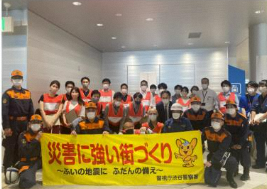 Flooding drills as a countermeasure against heavy rain disasters
Flooding drills as a countermeasure against heavy rain disasters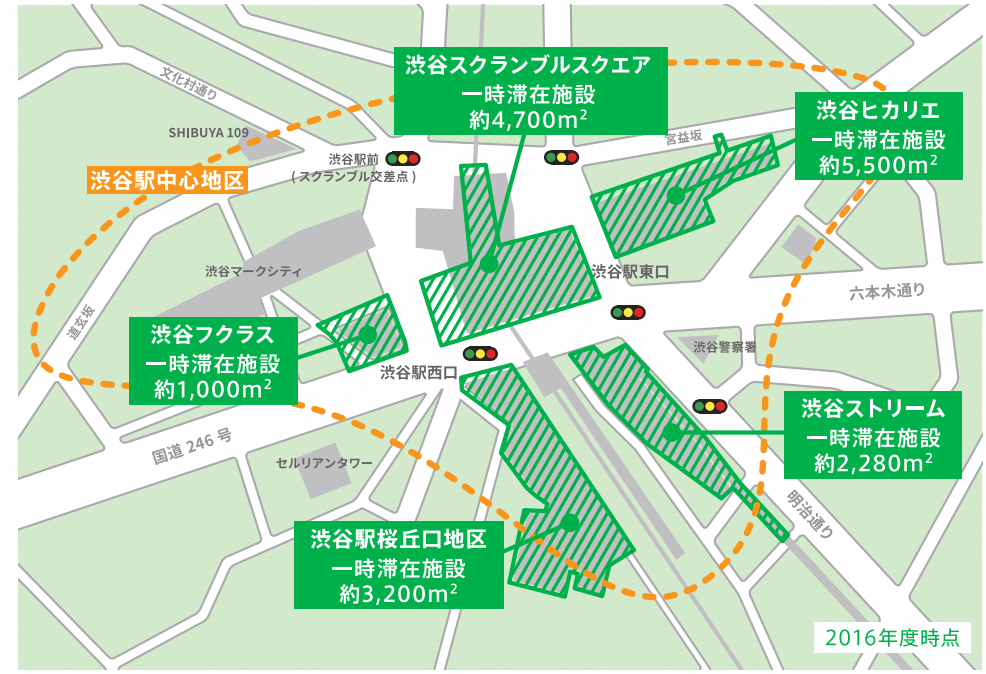 Rule-making in case of disaster (measures to help those who have difficulty going home)
Rule-making in case of disaster (measures to help those who have difficulty going home)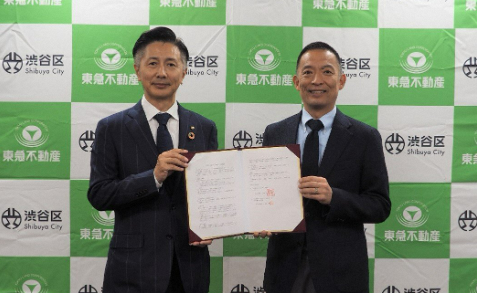 “Comprehensive Collaborative Agreement on Local Disaster Prevention in Shibuya Ward
“Comprehensive Collaborative Agreement on Local Disaster Prevention in Shibuya Ward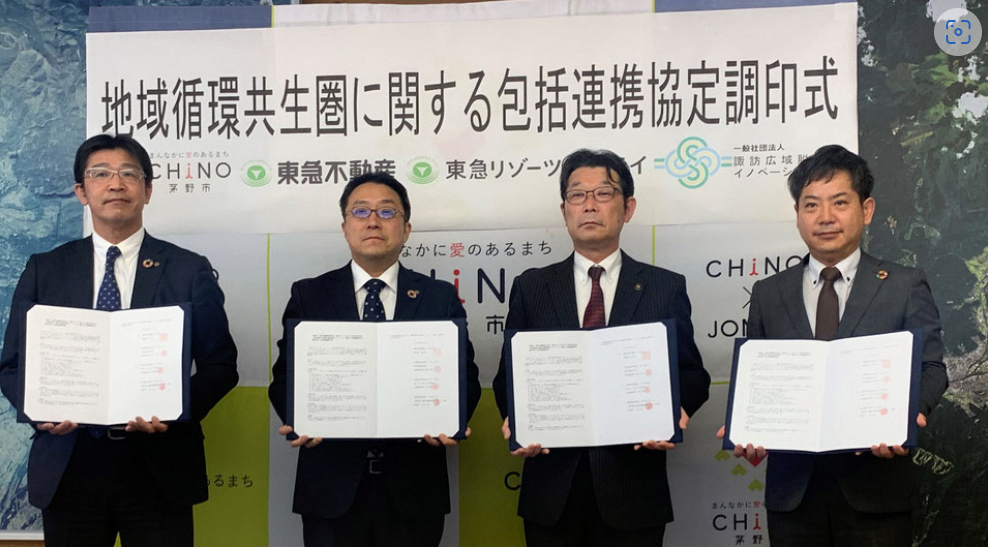 “Comprehensive Collaborative Agreement on Regional Circular and Ecological Sphere
“Comprehensive Collaborative Agreement on Regional Circular and Ecological SphereIn the business of real estate that the Group is involved in, given the process between development and operation for residences, office buildings, commercial facilities, hotel and leisure facilities and so forth spans a long period of time and that numerous parties have involvement in that process, we believe that it is necessary to work together with our stakeholders (design and construction companies, customers, etc.) to tackle nature-related issues in our entire supply chain.
The Company has set forth at “Sustainable Procurement Policy” that covers consideration towards the environment in the form of “compliance with and respect for international human rights and labor standards,” as well as “combatting climate change,” “biodiversity protection,” “effective use of resources,” “proper water use” and “ensure appropriate use of forest resources,” and is promoting initiatives for biodiversity conservation across its entire supply chain.
The following initiatives are cited in the “Sustainable Procurement Policy” with respect to the preservation of the natural environment.
For the building companies that constitute our suppliers, we set forth compliance with our Sustainable Procurement Policy as a condition upon placing orders for building work, and regularly carry out due diligence questionnaires to verify the situation at each of those companies. We aim to establish a responsible supply chain by cooperating with building companies to respond to issues when they are present. In FY2022, in addition to obtaining responses from 50 companies through our regular questionnaire survey, we held individual meetings for two of those companies to remedy problematic areas, share leading cases, and so forth.
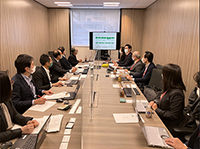 Performance of due diligence on suppliers
Performance of due diligence on suppliersMost of the plywood panels for concrete formwork used upon building contain Southeast Asian materials as their raw material. It may be pointed out that environmental destruction in the forest of origination, the usurping of land from indigenous people or something similar may be involved. By handling this situation through cooperating with a building company that constitutes a primary supplier, the Group set forth a target of 100% by FY2030 for the usage rate of sustainability-minded lumber (FSC- or PEFC-certified lumber as well as domestically-produced lumber, etc.) in raw materials for plywood panels for concrete formwork used in the building of buildings, and pushed forth with initiatives in the following vein in FY2022.
In FY2022, we used PEFC-certified lumber in plywood panels in building work for one condominium building (BRANZ Chiyoda Fujimi). For wood products other than certified lumber contained in the likes of interior materials, we verified the place of origin and legality to the extent we could through a hearing with building materials manufacturers.
Tokyu Re・design Corporation participated in a “Meeting on Carbon-Neutral Solid Wood Materials” and gathered information on lumber products used in residences.
At COERU SHIBUYA (completed in June 2022), which is located in the greater Shibuya area, we used larch materials produced in Nagano Prefecture, which were granted SGEC certification, as a wooden-hybrid fire-resistant laminated lumber. Legal timber produced in Finland was used in the wooden-steel muntins (the earthquake-resistant braces).
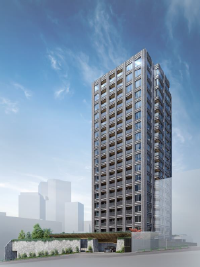 BRANZ Chiyoda Fujimi
BRANZ Chiyoda Fujimi
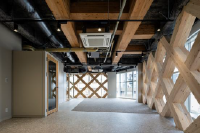 COERU SHIBUYA
COERU SHIBUYA
In 2011, the year after the COP10 in 2010, the Group formulated its Biodiversity Policy.
In addition to promoting the planning of communities that coexist with nature, we endorsed the 30 by 30 initiative by the Ministry of the Environment in March 2022, joined the TNFD Forum in June 2023, and otherwise set our sights on domestic and international social and policy trends and frameworks that include the “Kunming-Montreal Global Biodiversity Framework” (GBF); the National Biodiversity Strategy, the Machizukuri (Urban Development) GX Strategy and guidelines by the Japanese government, and so forth. Based on the Group’s history of environmental consideration and coexistence with nature up to this point, we took this examination based on TNFD disclosure as an opportunity to revise the Group’s Biodiversity Policy in the following manner. Based on this, we will promote initiatives aimed at biodiversity going forward.
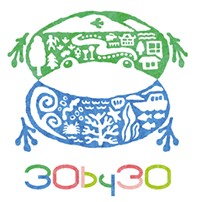
While respecting international goals that seek to realize “Living in harmony with nature” and “nature positive” as set forth in the “Kunming-Montreal Global Biodiversity Framework” (GBF), working together with our stakeholders, we will promote initiatives to circumvent and minimize our negative impact on biodiversity and expand our positive impact on biodiversity.
Under “strategy” by the TNFD, it is recommended that corporations explain the nature-related dependencies, impacts, risks and opportunities that they identified, the effects those exert on companies’ businesses, strategies and financial plans, the resilience of strategies based on scenarios, and priority locations for business activities and value chain.
In the Report, the below information is examined as it pertains to the Group’s business, with an accompanying explanation given between pp. 22-38.
The impact of nature-related risks and opportunities on the Group’s business and finances will be further examined, taking into account the concept of scenario analysis.
This table can be scrolled horizontally
| Nature of recommendations for strategy | Information examined for this disclosure |
|---|---|
| Explanation of dependencies and impacts on nature | Group overall: Overview of dependencies and impacts on nature |
| Greater Shibuya area (priority location) Quantitative and qualitative examination of dependencies and impacts in line with LEAP Approach |
|
| Explanation of nature-related risks and opportunities and their impacts on businesses, strategy, etc. | Group overall: Identification of envisioned risks and opportunities based on dependencies and impacts on nature and revisions to Biodiversity Policy |
| Greater Shibuya area (priority location) Identification of risks and opportunities based on examination of dependencies and impacts |
|
| Explanation of priority locations | Group overall and greater Shibuya area (priority location): Examination of priority locations from standpoint of nature at addresses of properties held and operated |
Using TNFD classification as a reference, we examined a summary of the nature of dependencies and impacts according to business and value chain steps and their qualitative importance. Additionally, using the sector-specific ratings in the tools ENCORE, which was developed by the UN Environment Programme (UNEP), and SBT for Nature as a reference*1, we sorted out the importance of dependencies and impacts according to four steps between Very High and Low. The results of that analysis are as follows.*2
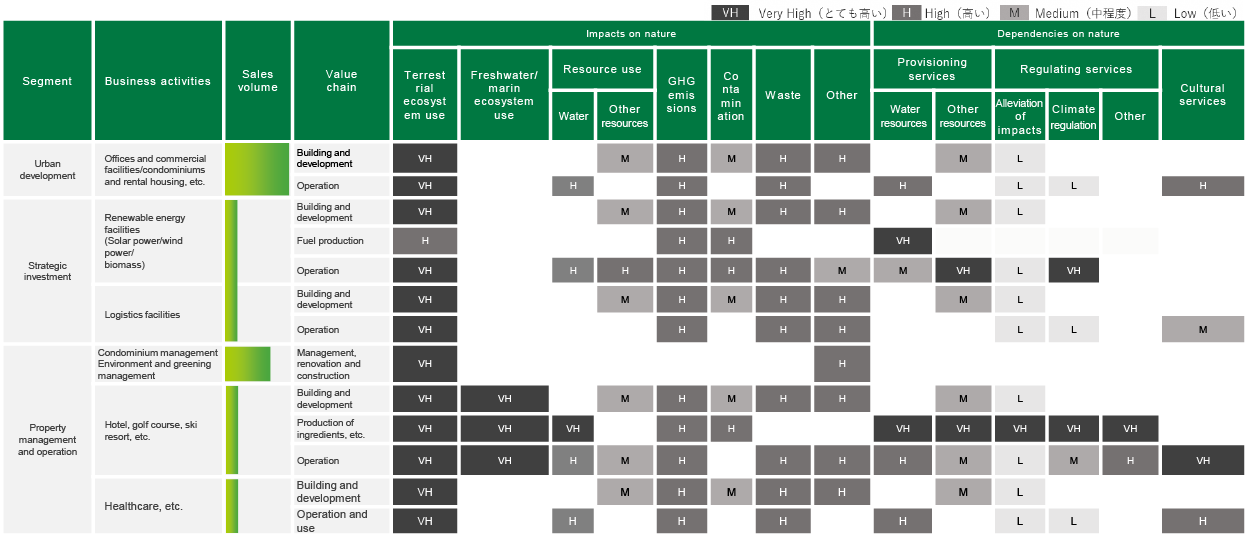
As the importance of the relationship with nature at the development to operation stages at Group properties is believed to particularly high within the value chain, we evaluated priority locations for properties at 267 main sites under the Urban Development business and Property Management & Operation Business (offices/commercial facilities, hotels, leisure facilities, renewable energy facilities, etc.) based on the address of the properties. The priority locations were selected based on the indicators in the table below, which refer to the TNFD's perspective of ecologically sensitive locations, as well as the importance of the company in terms of dependency, impact, risk and opportunity.

This table can be scrolled horizontally
| Evaluation perspectives In the TNFD Framework | Metrics referred to |
|---|---|
| Ecosystem integrity*1 | Evaluated according to how high the Biodiversity Intactness Index*2 is |
| Biodiversity importance | Evaluated with the below metrics taken into total consideration
|
| Water stress | Evaluated according to how high Baseline Water Stress*6 is |
Based on the results of the analysis of each indicator, as well as the results of the study of the Group's overall dependence on and impact on nature on page 22, we have identified priority areas (priority areas) in terms of nature-related risks and opportunities for the Group, as shown in the figure below.
In this disclosure, as shown on pp. 25-37, we performed a detailed examination of the dependencies and impacts on nature and associated risks and opportunities in line with the LEAP Approach provided by the TNFD with respect to Greater Shibuya area under the Urban Development Business, which constitutes one of our businesses of focus.
Note that we will proceed to examine initiatives for other priority locations as we move forward.
| Priority location: Greater Shibuya area (Number of properties: 39)
|
According to the analysis of dependencies and impacts on p. 22, based on business scale (sales volume), it is likely that impacts on nature in the Urban Development Business are particularly large. |
|---|---|
| Priority location: Regions containing resort facilities, etc. 14 regions |
While the relative importance of their impacts based on business scale is not higher than the Urban Development Business, fourteen regions with high ecosystem integrity and high importance of biodiversity, which include TOKYU RESORT TOWN TATESHINA, were established as priority location. |
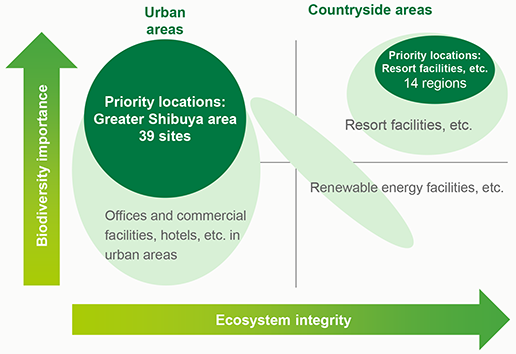
Based on the LEAP Approach presented by the TNFD, we performed a more detailed examination of dependencies and impacts on nature and accompanying nature-related risks and opportunities as they pertain to the greater Shibuya area, which we established as a priority location. More specifically, we examined the below information.
| Locate Discovery of the interface with nature |
Assessment of state and importance of nature with which businesses in the greater Shibuya area have points of contact |
|---|---|
| Evaluate Evaluation of dependencies and impacts |
Qualitative organization of dependencies and impacts through the value chain in urban development in the greater Shibuya area Quantitative evaluations in cooperation with Think Nature Inc. |
| Assess Assessment of risks and opportunities |
Organization of external environmental factors such as direction of national government policy related to businesses in the Greater Shibuya area Examination of risks and opportunities in Urban Development Business centered in the greater Shibuya area |
| Prepare Preparation for response and reporting |
Examination and organization of existing initiatives for risks and opportunities |
Map of Greater Shibuya Area
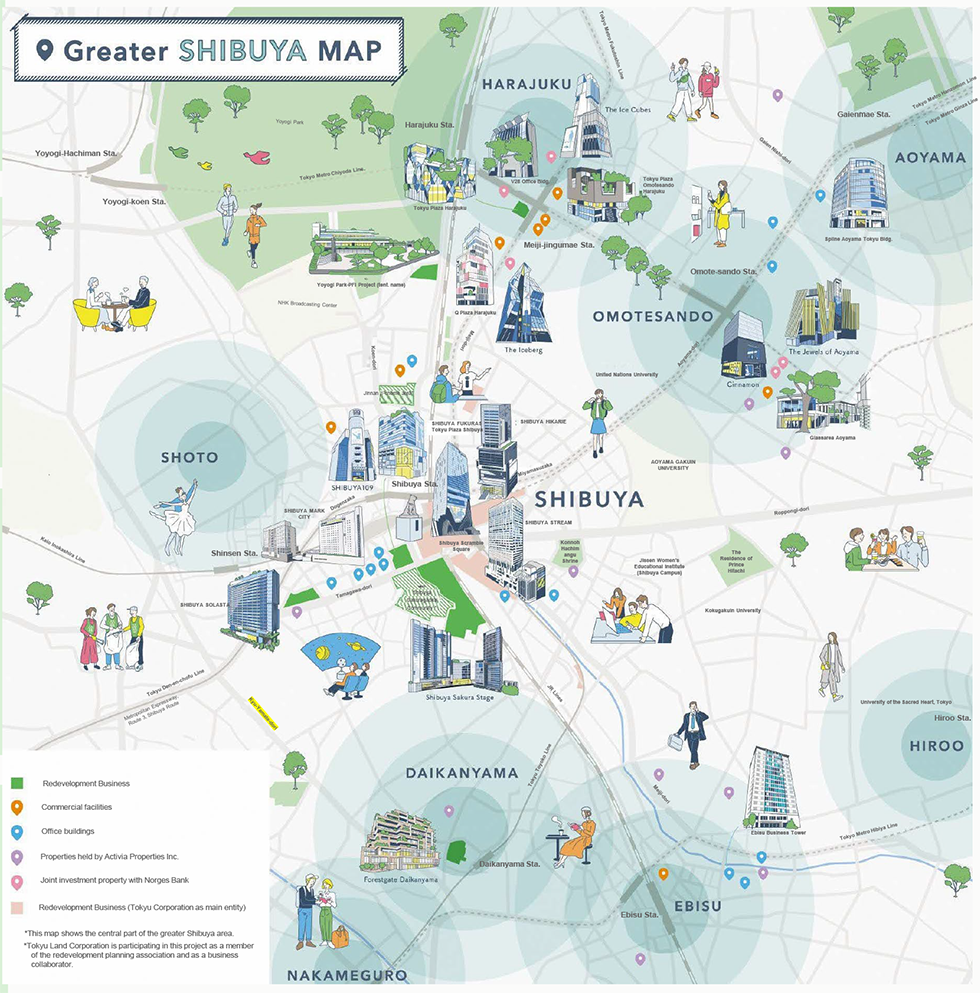
The greater Shibuya area is an ecosystem type centered on “the city and industries.” It is not a region with high ecosystem integrity.
At the same time, since the 1980s, the green space area ratio of the entire commercial district in the greater Shibuya area has continued to decrease (as calculated according to aerial photographs). It is likely that the region’s ecosystem integrity is trending further downwards.
Green space area ratio of entire commercial district in greater Shibuya area
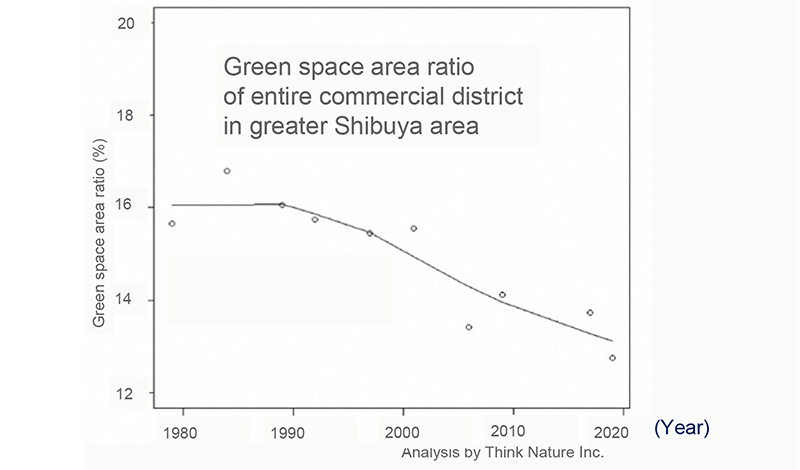 Analysis by Think Nature Inc.
Analysis by Think Nature Inc.
Between FY2016 and FY2018, three parties, TOKYO CITY UNIVERSITY and Group members ISHIKATSU EXTERIOR INC. and Tokyu Fudosan R&D Center Inc., performed a collaborative investigation and research6) on the ecosystem in the greater Shibuya area. The greater Shibuya area is surrounded by large-scale green spaces that include Meiji-jingu Shrine/Yoyogi Park, Shinjuku Gyoen National Garden and the Akasaka Estate. Meanwhile, the downtown area that has large-scale green spaces surrounding it is widely dotted with smaller pockets of green. This and other characteristics make it an area that coexists with nature, a rarity for a city center.
It is believed that new and endangered species as well as plant and animal species not commonly found in urban areas inhabit those large-scale green spaces. The greater Shibuya area is therefore believed to be a key region in forming an ecological network that links together such large-scale green spaces.
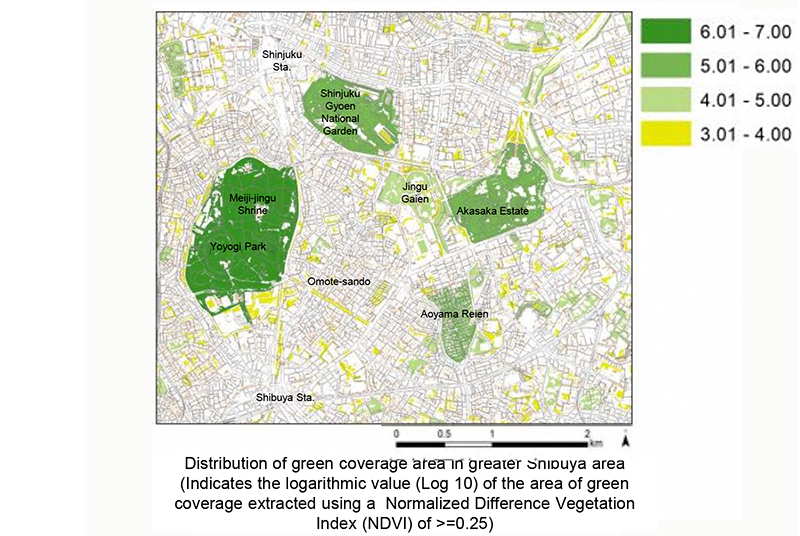
An organic network of regions centered on those that host superior natural conditions. An ecological network yields the following effects: By making it possible to conduct foraging, nesting, breeding and other inhabiting stages within the region, this network contributes to preventing the extinction of populations and drops in genetic diversity. The establishment of relationships among various species also links to a recovery in the diversity of species in the region as a whole.
An overall picture of dependencies and impacts through the value chain in the Urban Development Business in the greater Shibuya area is shown in the below diagram.
At the procurement stage for building materials, that business exerts dependencies and impacts on building materials, lumber and other resources. At the development and operation stage for real estate, while there is a possibility that the business will exert negative impact such as land modification and occupation, the business is dependent on nature from the standpoint of regulating services*1 such as the mitigation of the heat island effect and disasters and cultural services*2 such as comfort, stress mitigation and recreation. Also, aside from negative impact, the business, largely through its building greening initiatives, is also believed to exert a positive impact on ecosystems, such as by providing habitats for living things, as well as contribute to the increase in various ecosystem services that the Group and local communities depend on.
Dependencies and impacts that are believed to carry especially high importance are explained in detail starting on the next page.
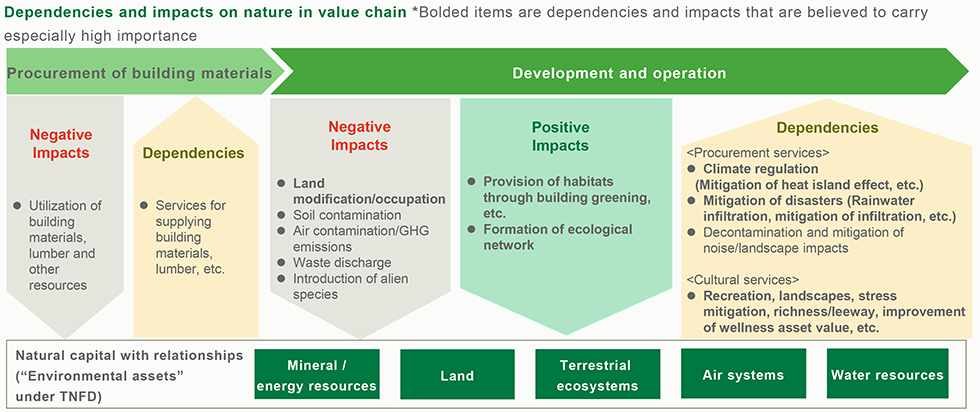
As part of the collaborative research7) conducted by TOKYO CITY UNIVERSITY, ISHIKATSU EXTERIOR INC. and Tokyu Fudosan R&D Center Inc., an investigation of butterfly species was conducted in the greater Shibuya area that targeted three biodiversity-considerate properties with rooftop gardens placed and their peripheral area. As a result, the presence of butterfly species was verified in the rooftop green spaces of each of those properties. Of particular note is how it became clear that building greening by the Group may be functioning as part of an ecosystem network connecting Meiji-jingu Shrine to Harajuku and Omote-sando to exert a positive impact on peripheral ecosystems through providing habitats.
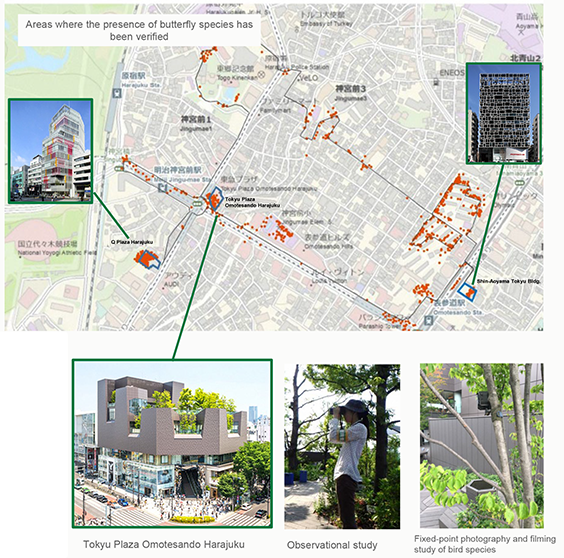
At “Tokyu Plaza Omotesando Harajuku,” which is located in the greater Shibuya area, monitoring studies of bird and insect studies at the “Omohara Forest” rooftop garden have been conducted yearly since FY2012 (except for certain periods such as the COVID-19 pandemic) to assess changes in the inhabiting and flying situation of living creatures there8).
Regarding bird species, between FY2012 and FY2019, the presence of 10 to 16 species was verified every year, or 22 species cumulatively.
For example, Parus minor, pairs of Passer montanus and the like were verified to nest in next boxes, and various species of bird such as Turdus naumanni were verified to drink in birdbaths, feed/forage through planting, rest, and so forth. This made it clear that a number of bird species use “Omohara Forest” as a habitat on a constant basis.
Regarding insect species, between FY2012 and FY2019, the presence of 40 to 64 species was verified every year, or 151 species cumulatively.
In particular, the presence of 9 species that include Papilio xuthus, which has superior mobility; Hyalessa maculaticollis, whose source of food lies inside rooftop green spaces; and Graphium sarpedon, was continuously verified over that 8-year period.
Based on monitoring results as well, it is inferred that building greening efforts, particularly those in “Omohara Forest,” are exerting a positive impact on the ecosystem through the provision of habitats for living creatures in the greater Shibuya area.
The Company intends to keep on assessing the condition of nature by continuing monitoring going forward.
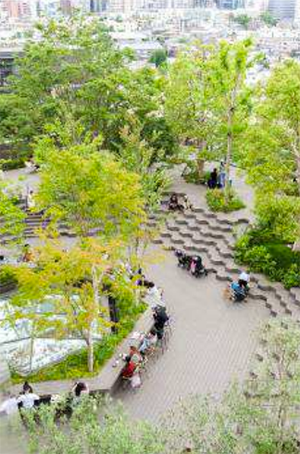 Omohara Forest
Omohara ForestList of bird species over time and observation photographs (verification survey)
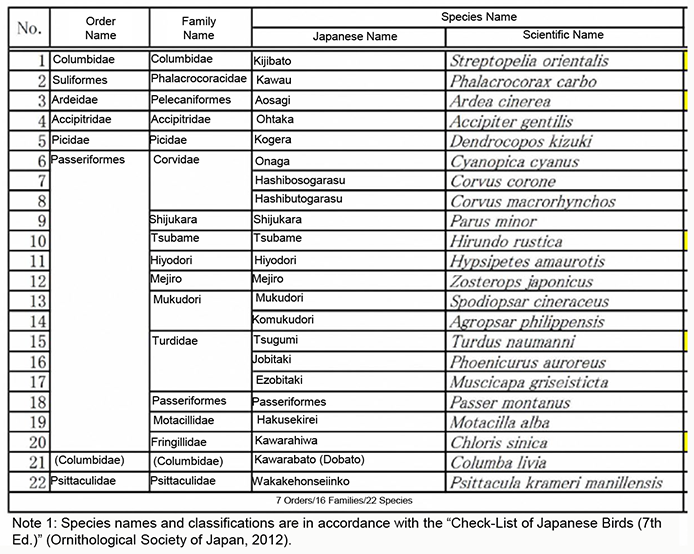
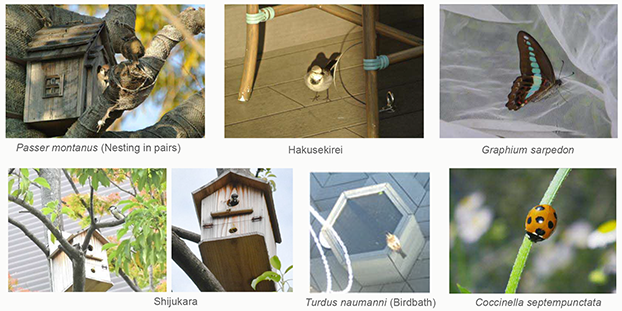
Among the impacts on nature with a high degree of importance that were examined on p.27, the impacts on the ecosystem based on land occupation and building greening of Group properties were quantitatively analyzed with the cooperation of Think Nature Inc.
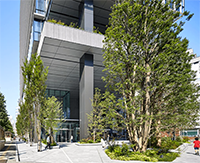 SHIBUYA SOLASTA
SHIBUYA SOLASTA
Based on the relationship between planted tree species and the birds/butterflies that use them, the percentage by which living creatures that inhabit the inside of a 1-km grid at the construction site increased or decreased before and after building was calculated for each number of species and populations across three classification groups, with the average of all six percentages used in results.
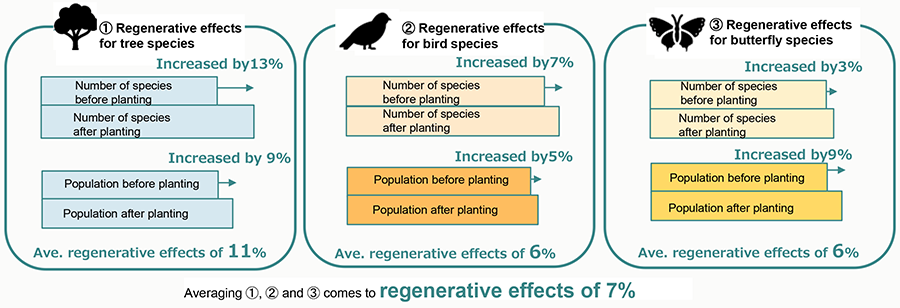
Since the 1980s and particularly from 1990 up through the 2000s, the green space area ratio had been trending downwards before and after building. However, for the Group’s 39 properties overall, the ratio has been trending above the average for the entire commercial district. Furthermore, since 2010, which represents a global turning point that included the holding of the 10th meeting of the Conference of the Parties to the Convention on Biological Diversity (COP10), biodiversity loss was reversed to put nature on a path to recovery (nature positive).
Regarding biodiversity regenerative effects, said effects before and after building were positive at 15 properties out of all 39. In particular, biodiversity regenerative effects at properties completed in FY2012 and beyond are high. We believe these are contributing to the recovery of biodiversity in the greater Shibuya area as a whole.
In the Group’s forte of planning communities that coexist with local communities, particularly those focused on target facilities under our Urban Development Business, we believe that engaging in development and operation that achieve a harmony between the securing of the quality and quantity of green space and the comfort of community visitors and facility users have linked to the high biodiversity regenerative effects shown in recent years.
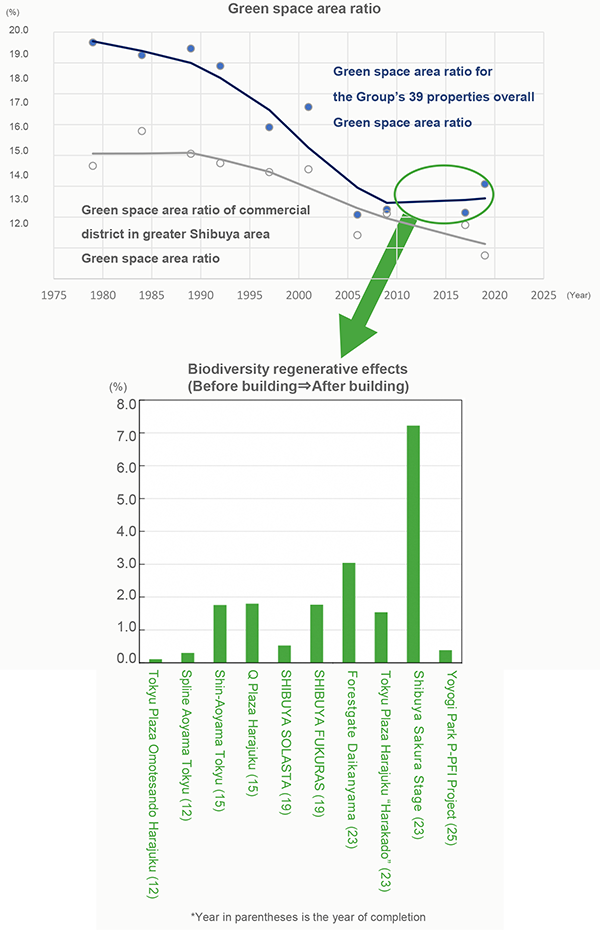
The results of analysis performed by Think Nature Inc. on the species capture rate through planting at all 39 properties (the percentage of species inhabiting the entire greater Shibuya area that can be called to green spaces at Group properties) showed that planting efforts by those properties were capable of calling approx. 60% of bird species and approx. 90% of butterfly species. In particular, properties where we conduct planting based on native trees indicated a high capture rate, The quality of green there is also contributing to higher biodiversity regenerative effects.
For example, at “Shibuya Sakura Stage,” the planting of numerous tree species in large number, including species native to Tokyo, make it possible to call a large number of bird and butterfly species. This has led to a high species capture rate and high regenerative effects (7.2%).
As it is now clear that greening that includes the likes of the planting of native species, particularly that conducted at properties built in recent years, contributes to the regeneration of biodiversity, we believe that it is crucial for us to continue tackling greening that is conscious of the quality of green space as we move forward.
List of species analyzed by Think Nature Inc.
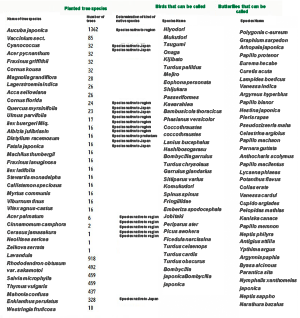
At Sakuragaoka located adjacent to Shibuya Station, we are pushing forward with the development of “Shibuya Sakura Stage,” a large-scale complex to serve as a new landmark for Shibuya.
At this property, we have established “HAGUKUMI STAGE” as a richly-green relaxation sport to promote three-dimensional greening that utilizes the ground, roof, wall surfaces and other elements and also contributes to heat island countermeasures. In addition, we are also tackling the reduction of our environmental footprint through means such as using solar power generation and other forms of renewable energy and introducing next-generation technology.
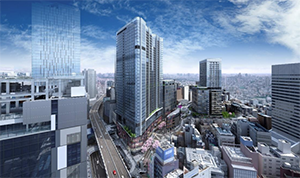 Distant view of Shibuya Sakura Stage
Distant view of Shibuya Sakura Stage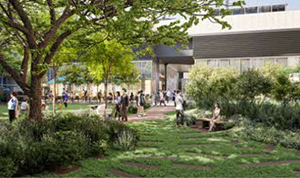 Hagukumi STAGE
Hagukumi STAGEWith the help of Regional Environmental Planning, Inc., an environmental consulting company that assists with biodiversity initiatives, we analyzed the current situation of the formation of an ecological network in the greater Shibuya area and the direction of that formation.
Based on analysis of the current situation surrounding topography and green space, it was verified that the topography of the greater Shibuya area has the lowlands of the valleys of the Shibuya River and Meguro River intertwining with the Musashino Plateau, and that much green space remains on slopes facing the valley formation and valley areas.
Additionally, the Company’s properties are located at the red circles on the map to the right, which also constitute locations where fellow properties of ours are in proximity to each other or are concentrated.
We have found that focusing on the following three areas will likely prove beneficial for the purpose of further enhancing our future ecological network,
① Locations with large amounts of green are in proximity to each other
② Valleys, slopes along the valleys, etc. are topographically connected
③ Target properties are in proximity to each other/concentrated together
We plan on examining the future monitoring of living creatures and associated measures as we move forward.
Connection of valley configuration in greater Shibuya area and direction of ecological network formation
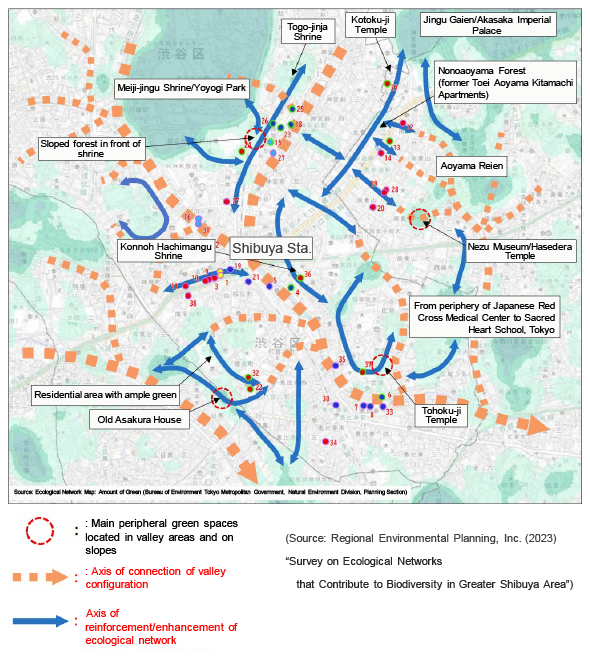
In the National Biodiversity Strategy and Machizukuri (Urban Development) GX Strategy by the Japanese government and the Regional Biodiversity Strategy by the Tokyo Metropolitan Government, functions such as the mitigation of the heat island effect through nature and the reduction of flood damage are emphasized as key ecosystem services in cities. From the standpoint of dependencies, these ecosystem services for disaster mitigation and climate regulation are believed to be crucial. According to the Ministry of Land, Infrastructure Transport and Tourism, while the area surrounding the greater Shibuya area (the area circled on the map) is an origin of heat, it is believed to be a region that can be expected to drop in temperature should green space preservation and greening measures be comprehensively taken.
Additionally, under Shibuya City’s “Green Development Policy,” it is established that forming connections with large-scale green areas through building greening and other means contributes to the creation of cool spots that serve to mitigate the heat island effect in cities. This is believed to be important from the aspect of exerting a positive aspect on such regulation services as well as the aspect of dependencies.
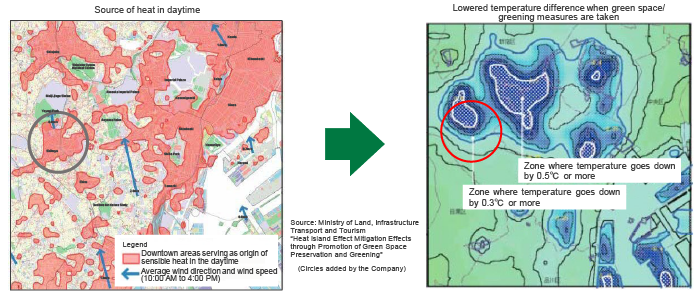
As part of the new “GREEN WORK STYLE” that it is promoting at its office buildings, the Group performed scientific verifications of the impacts and effects that green (vegetation and nature) have on people. For example, following a verification of the effects of breaks taken in rooftop spaces containing green, we found that stress levels after taking breaks where green was present were 6.0 points lower than those for indoor locations with no green present, and that levels of concentration rose considerably as well.
Based on these results, we can also conclude that in cities, the greater Shibuya area included, the importance of cultural services is high from the aspects of the effects on wellness in the form of better landscapes, stress mitigation and comfort; improved productivity coming from the likes of inspiration, invigorated communication and boosts in motivation for working individuals; and the appeal and higher asset value of office, commercial and other facilities.

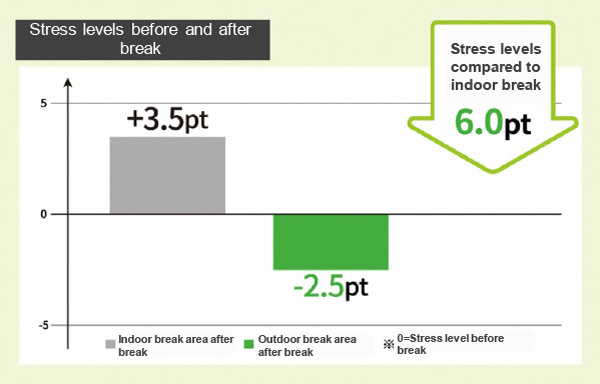
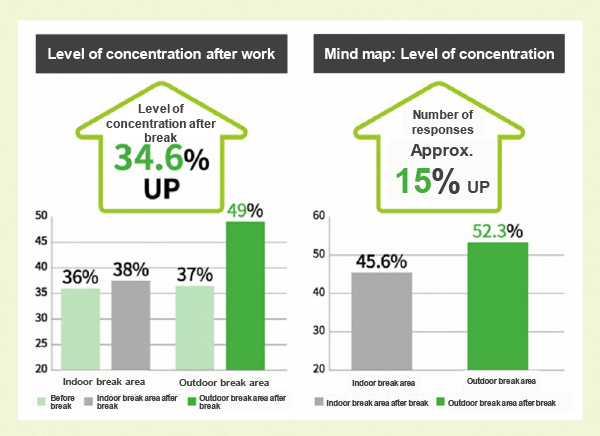
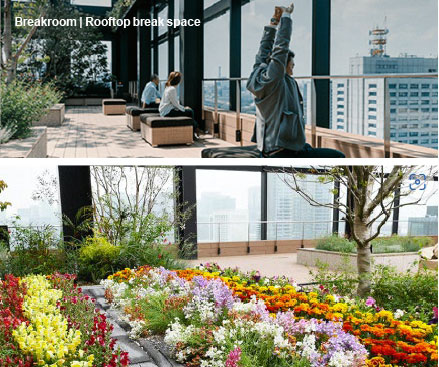
Based on dependencies/impacts on nature at the Group, after referring to information on the external environment such as related social trends and the direction of national government policy as well, we examined risks and opportunities envisioned in our Urban Development Business. Risks and opportunities believed to be important following a qualitative examination are as follows.
While physical risks due to the degradation of ecosystem services that we are dependent on, transition risks due to changes in regulations and the market environment and other risks are envisioned, we found that as shown on the next page, there is potential for numerous nature-related opportunities to arise.
This table can be scrolled horizontally
| Risk classification | Main dependencies and impacts | Description of risks in Urban Development Business | |
|---|---|---|---|
| Physical risks | Acute Chronic | Mitigation of heat island effects (Dependencies on regulation services) | Increase in A/C costs, etc. and deterioration of living/stay environment in cities due to worsening of heat island effect in line with land development by the Company and its stakeholders |
| Recreation; visual amenities (Dependencies on cultural services) | Deterioration of landscapes and other drop in appeal of community and fall in its asset value due to natural degradation in line with land development by the Company and its stakeholders | ||
| Transition risks | National policies/laws | Procurement of building materials, lumber and other resources (Impacts on nature) | Shortage in building materials, lumber, etc. and increase in procurement costs due to stronger regulations related to land modification and resource extraction for the sake of protecting nature |
| Land modification and occupation due to development and operation of offices, commercial facilities, and other properties (Impacts on terrestrial ecosystem) | Increase in costs to accommodate regulations due to stronger regulations calling for improved greening ratios at properties | ||
| Increase in handling costs due to introduction and/or reinforcement of regulations/national policies calling for enhancement of green quality, such as through consideration towards ecological network formation or planting of native species | |||
| Market | Growth in preferences of customers and tenants towards properties that exert positive impact on nature through limited negative impact on nature/enhanced quantity and quality of green, ecological network formation, etc. (risk) | ||
| Technology | Utilization of water, building materials, etc. (Impacts from resource utilization) | Increase in costs for introducing building technology with high resource/energy efficiency and low environmental footprint | |
| Reputational | Negative impact from land modification/occupation, contamination, waste discharge, introduction of alien species, etc. | Criticism and/or litigation addressing development and/or operation that exerts negative impact on the community’s ecosystem or landscape or on its cultural services involving nature | |
This table can be scrolled horizontally
| Classification of opportunities | Main dependencies and impacts Impacts | Description of opportunities in Urban Development Business | ||
|---|---|---|---|---|
| Opportunities | Market | Customers/tenants | Lowering of negative impact such as land modification/occupation, contamination and waste discharge Positive impact on ecosystems (and ecosystem services) such as provision of habitats through greening and ecological network formation |
Growth in preferences of customers and tenants towards properties that exert positive impact on nature through limited negative impact on nature/enhanced quantity and quality of green, developments in greening technology, ecological network formation, etc. |
| National policies/laws | Gaining of national policy-based support and incentives for quality and quantity of green spaces under Urban Development Business | |||
| Capital flow/finance | Increase in investments in real estate that exert positive impact on nature through limited negative impact on nature/enhanced quantity and quality of green, developments in greening technology, ecological network formation, etc. | |||
| Reputational Capital | Corporate value | Improvement in Company’s reputation and corporate value through businesses activities that reduce negative impact on nature and exert positive impact through ecosystem-conscious real estate development, sustainable resource procurement, the reduction of contamination, etc. | ||
| Engagement/community value | Improvement in relationships with local community through development and operation efforts that exert positive impact on nature through development/operation with limited negative impact on nature/enhanced quantity and quality of green, developments in greening technology, ecological network formation, etc. | |||
| Increase in appeal of entire community and improvement in its brand value and asset value through business operation that draws out the appeal of the nature in the community | ||||
For business sectors other than the Urban Development Business as well, nature-related risks and opportunities such as those in the below table are envisioned based on an overview of dependencies and impacts. Alongside various risks, possibilities for seizing business opportunities are also envisioned. For that reason, the Company will proceed to assess the details of dependencies, impacts, risks and opportunities by pushing forward with detailed analysis centered largely on its Hotel and Leisure Business, which we operate in priority locations.
This table can be scrolled horizontally
| Classifications of risks and opportunities | Description of risks and opportunities in businesses | |
|---|---|---|
| Physical risks | Acute Chronic | Increase in wind or flood damage, sediment or other disaster risk due to degradation of nature in line with development activities by the Company and its stakeholders [Hotel and Leisure Business, Renewable Energy Business] |
| Decrease in demand due to degradation of ecosystems and biological species (forests, marine ecosystems, coral reef, etc.) that are important as tourism resources [Hotel and Leisure Business] | ||
| Fall in power generation efficiency and impacts on ski slopes and other leisure facilities due to fall in natural climate regulation capability [Hotel and Leisure Business, Renewable Energy Business] | ||
| Shortage of biomass fuel and price surges due to degradation of ecosystems at production sites [Renewable Energy Business] | ||
| Supply shortages and price surges for ingredients due to degradation of nature, overexploitation, etc., starting with pollinator functions [Hotel and Leisure Business] | ||
| Transition risks | National policies/laws | Shortage of biomass fuel and price surges due to regulations for protecting forests [Renewable Energy Business] |
| Price surges for ingredients, etc. due to mainstreaming of sustainable agriculture and livestock industries and fisheries and stronger related regulations [Hotel and Leisure Business] | ||
| Reputational | Criticism of negative impact exerted by power plants on ecosystem [Renewable Energy Business] | |
| Opportunities | Growth in appeal of local community as tourist destination through protection and regeneration of community’s habitats and ecosystem [Hotel and Leisure Business] | |
| Expansion in revenues from growth in appeal of nature at tourist destination [Hotel and Leisure Business] | ||
| Enhancement of competitiveness through differentiation in the form of appeal/brand value of business based on business development and operation conscious of appeal of nature in local community, activities that coexist with that community, etc. [Hotel and Leisure Business, Renewable Energy Business] | ||
Since “risk and impact management” by TNFD recommends describing processes for identifying, evaluating, and managing nature-related dependencies, impacts, risks, and opportunities, as well as their integration into the company-wide risk management process, we will discuss them.
Regarding dependencies and impacts, after sorting out an overview of dependencies and impacts for each group business and value chain and their quantitative importance, in our Urban Development Business in the greater Shibuya area, we performed evaluations of quantitative and qualitative dependencies and impacts based on information unique to the local community.
Based on those dependencies and impacts as well as information on our external environment such as the National Biodiversity Strategy and Machizukuri (Urban Development) GX Strategy by the Japanese government and the Regional Biodiversity Strategy by the Tokyo Metropolitan Government, we identified nature-related risks and opportunities in our Urban Development Business centered in the greater Shibuya area. We disclose these risks and opportunities as those which are believed to bear a particularly high level of importance for the Group from a qualitative standpoint.
Going forward, to coincide with TNFD development efforts, we will continue to examine the ideal nature of scenario analysis and evaluations of the importance of risks and opportunities based on that analysis.
Analysis of dependencies and impacts
Gathering of information regarding external environment
Identification of risks and opportunities
Tokyu Fudosan Holdings established a “Tokyu Fudosan Holdings Sustainability Committee” directly under the President & CEO that devises plans for nature- and biodiversity-related challenges and other material issues, verifies the results of those plans, and reports those results to the Board of Directors.
The Group Sustainability Promotion Department acting as the secretariat for the Tokyu Fudosan Holdings Sustainability Committee and each business department set targets for nature- and biodiversity-related issues, manage their results, share associated information and, in doing so, conduct proper reporting based on related laws and regulations. Simultaneously, they endeavor to reduce negative impact and expand the positive impact on nature and biodiversity through business activities.
Additionally, having formulated the “Sustainable Procurement Policy” in January 2021, outside of our business activities, we also work together with upstream and downstream shareholders in our value chain to address the reduction of the negative impact on nature and biodiversity.
Tokyu Fudosan Holdings manages risks using the below individual risk units with risks that materially impact management set forth as particularly “main risks.”
① Investment risks ② Financial capital risks ③ Personnel affairs and labor risks ④ Legal affairs and compliance risks ⑤I IT strategy risks ⑥ Information leakage risks ⑦ Crisis management response ⑧ Climate change risks
The Company centrally manages ESG risks that include nature- and biodiversity-related issues as a subcategory of “main risks.”
Climate change, biodiversity conservation, environmental contamination, reduction and appropriate disposal of waste, resource utilization, water resource conservation, protection of human rights and prevention of child labor Contributions to local communities and society, employee health, safety and human rights, corruption and bribery, corporate governance, etc.
The Group has formulated the below targets with respect to nature-related dependencies and impacts.
Going forward, we will continue to examine the ideal nature of metrics and targets for managing nature-related dependencies, impacts, risks and opportunities in the Group based on TNFD’s final recommendations and trends in SBT for Nature as well.
| Targets related to land use | Building greenery (rooftop, wall surfaces, etc.) * 100% actual in FY2020 Target of 100% for FY2030 * Newly-built large-scale office building/commercial facility properties of Tokyu Land Corporation |
|---|---|
| Targets related to waste emissions | Reduce waste emissions at our business sites and in the real estate portfolio in our possession by 11% over FY2019 by FY2030 |
| Targets related to water resources | Reduce water resource utilization per floor area at business sites and in real estate portfolio on year-on-year basis until FY2030 |
| Targets related to resource procurement | Formwork wood materials containing 100% certified timber by FY2030 |

Specific initiatives in our group to date regarding risks, opportunities, and impact are presented below. The following are some of the major initiatives we have undertaken.
Community planning, greening technology and planting management
Forest management and marine conservation
Invasive alien species countermeasures, contamination reduction, waste reduction, resource circulation and water utilization reduction Supply chain and stakeholder engagement
In the greater Shibuya area, which has Shibuya Station at its center, we further evolved upon and deepened our “Greater SHIBUYA 1.0” concept for the area to formulate our new community planning strategy “Greater SHIBUYA 2.0.” In addition to bringing together the three elements of workplaces, residences and entertainment, we will promote initiatives for “digital” and “sustainable” as the foundation of that strategy. Regarding “sustainable,” through efforts such as developing richly-green environments, promoting decarbonization and reinforcing resilience, we are engaging in the planning of a community in which anyone can spend time in safety, security and comfort, one that has cutting-edge environmental measures in place and will grow on a continuous basis.
At our office buildings, we are currently expanding “GREEN WORK STYLE,” through which we seek to realize improved corporate value and the realization of worker well-being from the dual aspects of “the workplace” and “office solutions” through diverse green power while being mindful of health, safety, the environment, and sustainability. By realizing a work style through which workers interact with green, we will alleviate their day-to-day stress and draw out the productivity of each individual member to the fullest while also contributing to the smooth formation of a community.
A green terrace for tenants has been placed on every office floor of this facility. By having workers feel green and fresh air, which is normally lacking in an office environment, in their immediate surroundings, we will contribute to reducing their stress and improving their productivity. Additionally, at the top floor of the facility, we have set up a sky terrace and lounge (shown in photo to the right) that takes advantage of the rooftop space to provide “a place to work under the refreshing sky.”
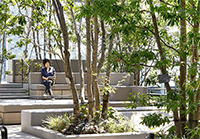 Rooftop sky terrace
Rooftop sky terraceGiven the importance of biodiversity-conscious urban greening, in the greater Shibuya area, we are actively promoting the greening of areas such as rooftops and wall surfaces at our business sites in order to preserve the ecosystem. By connecting the green in the vicinity and acting as a relay point for the living creatures that inhabit those areas, we are tackling the formation of an ecological network in the greater Shibuya area.
In particular, when we develop large-scale properties with considerable impact on the local community, we carry out ecosystem studies in the peripheral area at the planning stage, perform greening using vegetation that takes the bird and inspect species that inhabit the area into consideration, and pursue biodiversity conservation in that community.
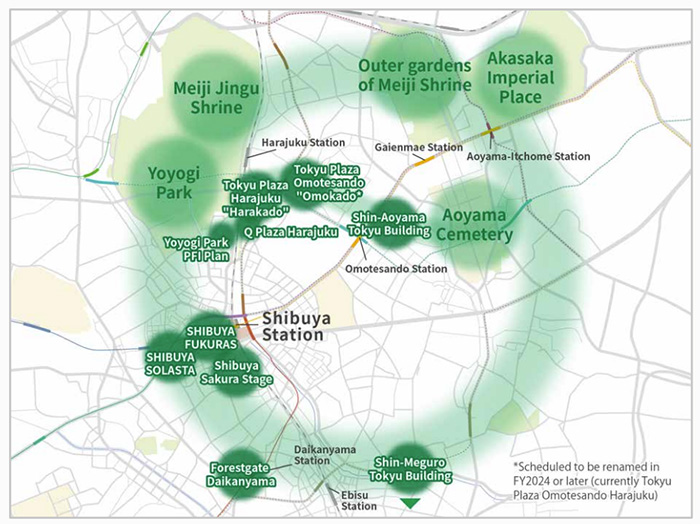
* Newly-built large-scale office building/commercial facility properties
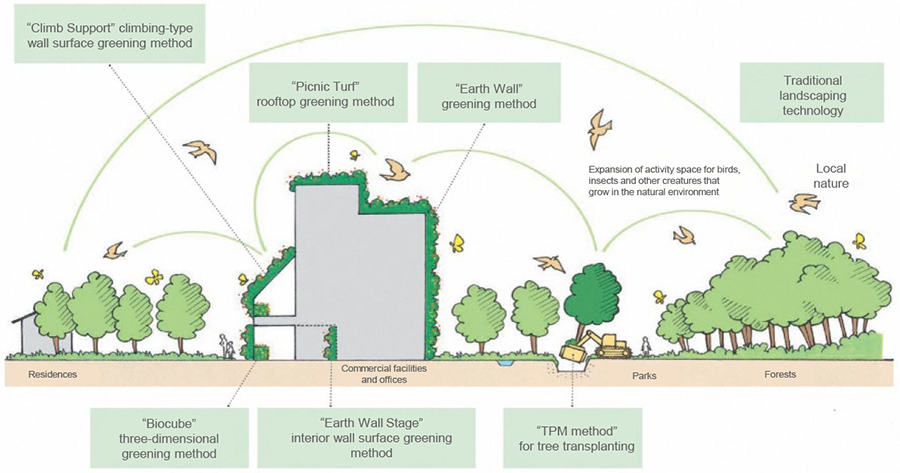
The name of each process is the technique name at ISHIKATSU EXTERIOR INC.
At the “Omohara Forest” rooftop terrace at the “Tokyu Plaza Omotesando Harajuku” commercial facility, with the help of natural environment conservation specialist Regional Environmental Planning, Inc., we perform regular living creature studies throughout the year in order to assess trends in the ecosystem of the green space there. (Previously described)
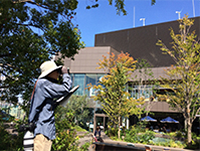 Scene from living creature study
Scene from living creature studyFor properties that are especially surrounded by numerous natural environments and also have ample green space secured on site, we encourage the acquisition of certifications such as ABINC to back the securing of biodiversity.
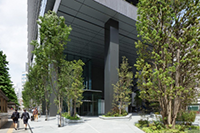 SHIBUYA SOLASTA (ABINC-certified)
SHIBUYA SOLASTA (ABINC-certified)In the Takeshiba area located in Tokyo’s Minato City, which constitutes a national strategic economic growth area, we are pursuing community planning that takes advantage of industry-academia cooperation and technology and are moving forward with long-term continuous initiatives to enhance the appeal and vitality of the area of the whole, including its environment (sustainability).
The office town serving as the core piece of the project is a large-scale complex with a total floor area of approx. 180,000m2, 40 floors above ground, and two floors below ground. The higher floors consist of an office area, with the lower floors hosting a commercial area. The office lobby on the sixth floor provides a space that incorporates water and green and is in harmony with the local community.
On the southeast side of the second through sixth floors, the spacious “SKIP TERRACE” has been erected in a staircase pattern. There, the “Eight New Views of Takeshiba” made up of eight scenes represented by the sky, bees, a rice paddy, a vegetable garden, aromas, water, an island and rain are presented as a “Satoyama”-like landscape. By forming an ecological network linked to the Hamarikyu Gardens, the Kyu-Shiba Imperial Gardens and the rich green of the surrounding area, we aim to contribute to the biodiversity of the local community.
At the “Rice Paddy Scene” containing a 145m2-wide rice paddy and the “Vegetable Garden Scene” where vegetables and fruits are grown, students at the nearby preschool, tenant-related individuals and people who reside in the residence tower can take part in rice-planting or harvesting events, which will be tied into environmental education for stakeholders.
Additionally, at the “Bees Scene” where beehives are placed and the “Sky Scene” with of nest boxes placed on wall surfaces that are hard for people on the fifth, eight, tenth and twelfth floors to catch sight of, habitats for honeybees and raptor species such as falcons and kestrels will be supplied. Through these, we will contribute to biodiversity in the city center.
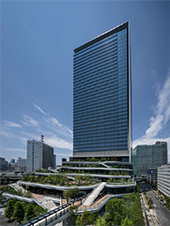 TOKYO PORTCITY TAKESHIBA Office Tower”
TOKYO PORTCITY TAKESHIBA Office Tower”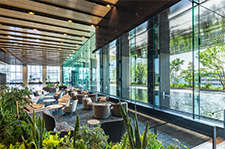 Office lobby
Office lobby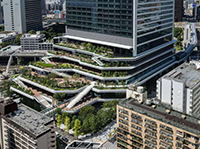 Takeshiba Shin Hakkei (SKIP TERRACE)
Takeshiba Shin Hakkei (SKIP TERRACE)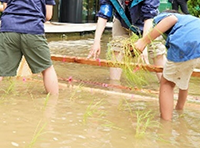 Rice-planting featuring resident participation (Rice Paddy Scene)
Rice-planting featuring resident participation (Rice Paddy Scene)Based on the concept of green infrastructure (see note), ISHIKATSU EXTERIOR INC., which handles the group’s Environmental and Greening Management Business, has been engaged in disaster prevention and mitigation, protection and preservation of nature and biodiversity, sustainable urban development, and contracted management of various green spaces by utilizing various technologies, including urban greening technologies such as rooftop greening and wall greening.
Green infrastructure is a concept that aims to utilize the various benefits of the natural environment, such as disaster prevention, disaster mitigation, and environmental preservation, to solve various social issues, through its functions of mitigating global warming, providing places for organisms to grow, shaping landscapes, and providing cultural services. The Ministry of Land, Infrastructure, Transport and Tourism's GX Strategy for Urban Development includes a call for public-private partnerships to further promote the quality and quantity of urban green spaces with diverse functions as green infrastructure, and the importance and attention to this issue is increasing.

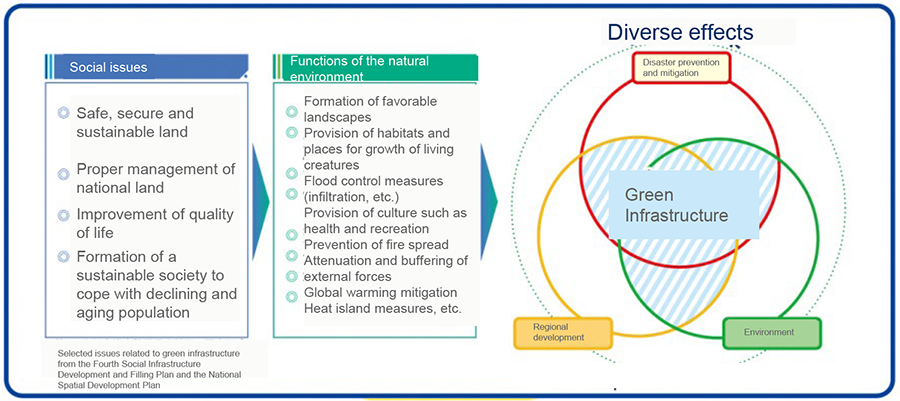
* Excerpt from the MLIT website
The company will reorganize the environmental greening technology and know-how it has promoted in its landscaping and greening business based on the concept of green infrastructure, formulate a green infrastructure menu that can be deployed to customers and various stakeholders, and apply it to all its businesses as "Greentect," a system to promote initiatives to realize green infrastructure. The menu visualized by the system lists a wide range of technologies and know-how in landscaping and greening-related fields, and is classified into eight major categories. The system is designed to use the menu at the sales stage of each project to determine the technological items to be adopted and incorporate them into the design, construction, management, and operation of the project.
Short for “Trans Planting Machine,” TPM is a technique that involves the use of specialized proprietary equipment by ISHIKATSU EXTERIOR, of which only two machines exist in the world, to enable the transplanting of large-diameter trees, which was considered difficult in the past. TPM enhances the degree of freedom of greening plans while protecting large trees as assets of the local community.
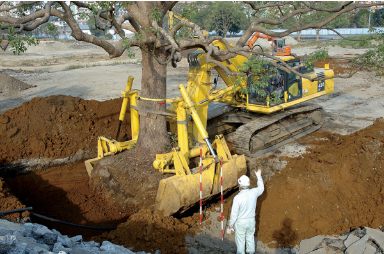 Transplanting work using a TPM machine
Transplanting work using a TPM machine
This technique is used to perform planting on multiple surfaces in a three-dimensional shape. Involving a box-shaped configuration that makes it easy to handle, Biocube realizes multisided greening while also saving space.
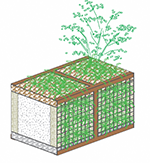 Biocube
Biocube
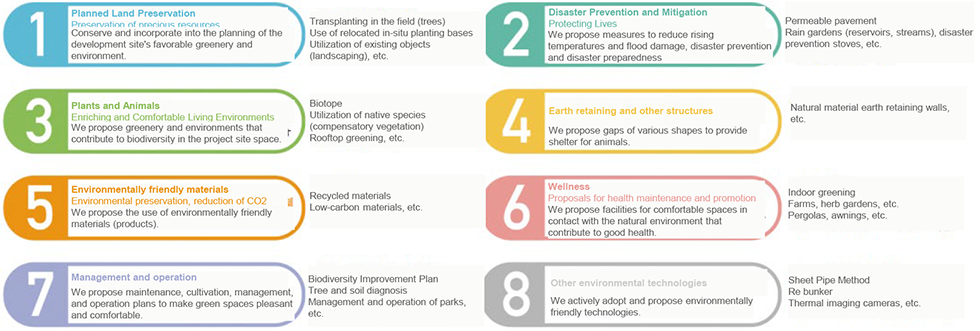
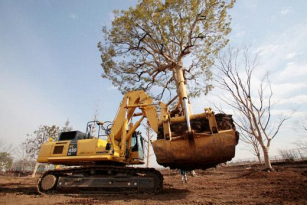 1.Planned land preservation Transplanting in field
1.Planned land preservation Transplanting in field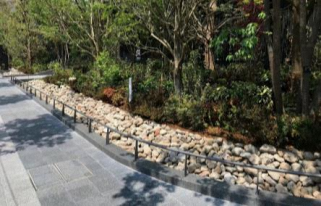 2.Disaster prevention and mitigation Rain garden
2.Disaster prevention and mitigation Rain garden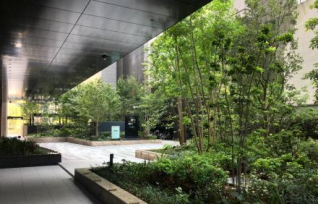 3.Plants and animals Utilization of native species (compensatory vegetation)
3.Plants and animals Utilization of native species (compensatory vegetation)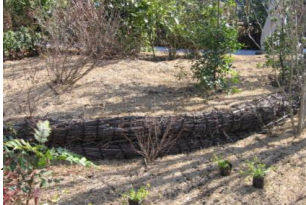 4.Earth retaining Natural material earth retaining
4.Earth retaining Natural material earth retaining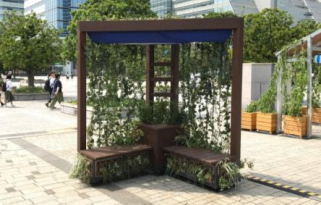 6.Wellness Pergolas, awnings
6.Wellness Pergolas, awnings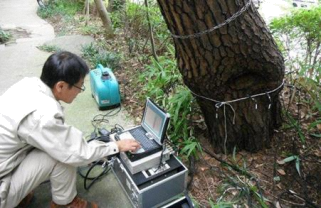 7.Management and operation Tree and soil diagnosis
7.Management and operation Tree and soil diagnosisIn condominiums, ISHIKATSU EXTERIOR INC. plans and constructs greenery to realize a living environment that nurtures life, create planting management plans (agendas) to connect them to the future, and promote "GREEN AGENDA," which integrates planning and management based on management plans and visualization technology.
In order to realize greenery for homes that meets the demands of the environmental age, it is committed to "visualizing" planting over the medium to long term, and to promoting its customers' "interest" and "sympathy" toward green.
It aim to provide sustainable landscaping support services that contribute to the conservation and restoration of biodiversity in urban development by developing its existing landscaping technologies.
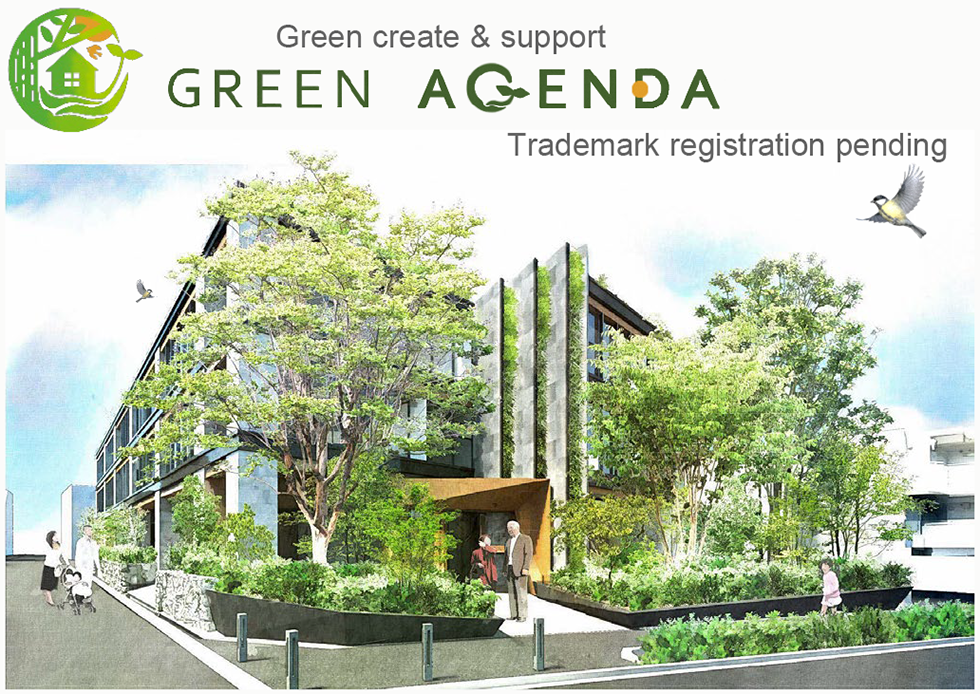 BRANZ JIYUGAOKA mage of future goal
BRANZ JIYUGAOKA mage of future goal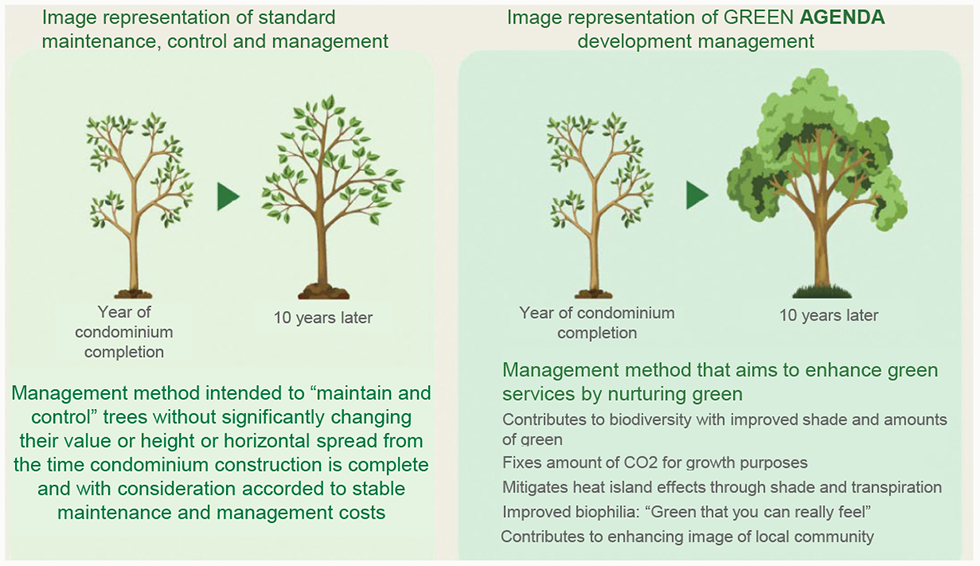
At “TOKYU RESORT TOWN TATESHINA,” a resort complex that encompasses villas, a hotel, a golf course, a ski slope and more, as an initiative to contribute to biodiversity conservation and the local production of energy for local consumption, we process thinned wood from the local community into wood chips and use them as fuel for biomass boilers. Having drawn up a forest management plan for an expansive forest with an area of 660ha, we have been conducting conservative thinning since 2018. This has facilitated the nurturing of the forest as seen in its thickly-grown underbrush and stronger tree roots. In addition, the resulting firmer ground has also help to prevent landslides and other natural disasters.
The Group has formulated a Biodiversity Action Plan (BAP) for regions it operates in that are especially important in terms of conservation. We have established our policy of tackling biodiversity conservation through this plan. At TOKYU RESORT TOWN TATESHINA, plans call for the performance of monitoring surveys on the living and growth environment of animal and plant life in the villa areas, the peripheral woodlands, and other locations. Should there be a threat to rare animal or plant species or to their living and growth environment, measures will be examined and subsequently incorporated into management plans for green spaces.
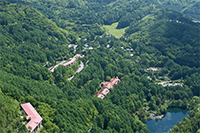 TOKYU RESORT TOWN TATESHINA
TOKYU RESORT TOWN TATESHINA
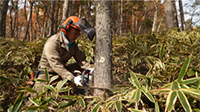 Scene of thinning
Scene of thinning
 Biomass boiler
Biomass boiler
The Group supports 30 by 30, an international goal dictating that at least 30% of terrestrial and marine areas should be effectively preserved as healthy ecosystems by the year 2030. At TOKYU RESORT TOWN TATESHINA, we participate in the challenge survey project for “Other Effective area based Conservation Measures” (OECM) certified by the Ministry of the Environment as part of our initiatives to strive to reach 30 by 30, and are currently aiming to obtain certification.
The beach in front of the “Palau Pacific Resort” hotel was once difficult for coral to inhabit due to mud runoff. Following renovations and construction made to that beach based on meticulous surveying, we succeeded in regenerating it into waters teeming with life.
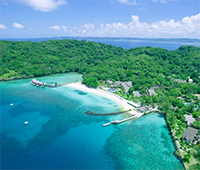 Palau Pacific Resort
Palau Pacific Resort
Under the Invasive Alien Species Act (Ministry of the Environment), invasive alien species refers to species of plant or animal that do not originally inhabit Japan and entered national boarders either with or without intention through human activity. These may harm or otherwise impact the ecosystem of local communities. In its endeavors to preserve the ecosystem of those communities, the Group has established a manual and set forth ways of dealing with highly invasive alien species when they are spotted.
 (Invasive plant species) Erigeron annuus
(Invasive plant species) Erigeron annuus (Invasive plant species) Coreopsis lanceolata
(Invasive plant species) Coreopsis lanceolata (Invasive alien species) Parasa lepida
(Invasive alien species) Parasa lepidaWorking together with design and construction companies and other stakeholders, the Group endeavors to reduce the effects of contaminants on the environment by preventing their discharge and refraining from using materials that cause that discharge.
The Group also jointly tackles the reduction of waste discharge in collaboration with design and construction companies, customer users, and other stakeholders.
Recognizing the need to effectively utilize the resources that go into its businesses, in collaboration with design and construction companies, customer users and other stakeholders, the Group endeavors to utilize resources properly and effectively.
The Green Connection Project is an initiative through which the Group preserves forests alongside its various stakeholders. Linking up with the forest preservation activities conducted by the Village of Nishiawakura in Okayama Prefecture, which is currently pursuing the “100-Year Forest Concept,” we work to preserve forests in accordance with various forms of stakeholder use, such as a condominium purchase, property management, use of office, hotel or leisure facilities, or use of our real-estate sales agents for existing residences. The Group provides forest preservation funds in accordance with the sales results that it posts. An example would be funds to preserve 10m2 worth of forest for each sale of a residential unit. In recent years, the Group is simultaneously purchasing J-Credits generated from the management of forests by the Village of Nishiawakura, thereby helping to popularize forest J-Credits. Up to this point, the Group has successfully preserved over 2,000 hectares of forest, and manages its progress yearly in this regard in the form of KPI with the goal of preserving 3,000 hectares of forest by FY2030.
The timber produced by the preserved forests is utilized in a number of Group businesses, then provided to customers to form a cycle of circulation. We are also proactively carrying out other initiatives in the form of purchasing thinned wood generated through the Village of Nishiawakura’s forest preservation activities and utilizing it in building work. In FY2022, we purchase 38m3 of thinned wood from FSC CoC-certified vendors who engage in the processing and sale of FSC-certified timber from the applicable local forests, which we used as interior materials for renovation work on residences and three commercial facility buildings.
At Tokyu Harvest Club VIALA Kinugawa Keisui, which opened in December 2022, trees cut down in the development site were used in elements such as furniture in the common areas.
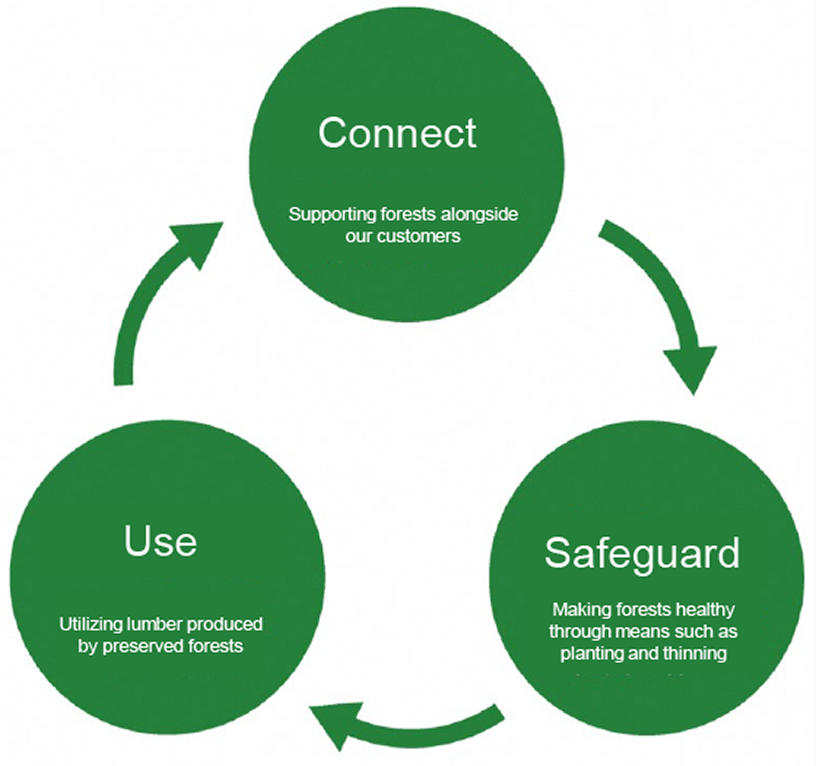
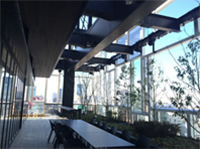 Shin-Aoyama Tokyu Bldg.
Shin-Aoyama Tokyu Bldg.
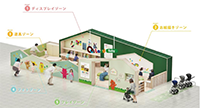 Abeno Q's Mall
Abeno Q's Mall
 COMFORIA Takashimadaira
COMFORIA Takashimadaira
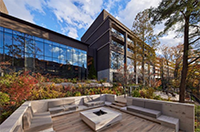 Tokyu Harvest Club VIALA Kinugawa Keisui
Tokyu Harvest Club VIALA Kinugawa Keisui
Our Forestgate Daikanyama property will consist of two buildings: the MAIN Building, which will house rental housing, share offices and a commercial facility, and the TENOHA Building, which will provide a sustainable lifestyle experience. This complex is slated to open in late October 2023.
The TENOHA Building, in turn, will be made up of a cafe and event space. In addition to providing a sustainable lifestyle experience, it will serve as a site of activity that bridges the local community and the city in cooperation with business operators who conduct circular economy activities and the local government. While supplying points of contact with sustainable endeavors to consumers, we will link up with various stakeholders to realize a circular economy. The building itself is a wooden construction containing thinned wood from the Village of Nishiawakura in Okayama Prefecture, which contains one of the forests targeted by Tokyu Fudosan Holdings for preservation, as the building’s structural materials.
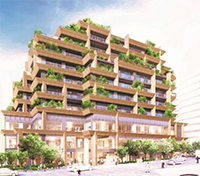 MAIN Bldg.
MAIN Bldg.
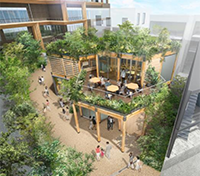 TENOHA Bldg.
TENOHA Bldg.
Through the implementation of regenerative and conservative construction, reforms and renovations, Tokyu Land Corporation, TOKYU LIVABLE and Tokyu Re・design contribute to the reduction of waste and resource circulation.
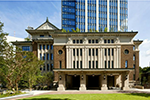 Exterior of Kudan-Kaikan Terrace (preserved area)
Exterior of Kudan-Kaikan Terrace (preserved area)
 Banquet room
Banquet room
TOKYU COMMUNITY CORP. now offers “CHOICE” for sale. This long-term warranty product allows the cycle of large-scale renovation and construction work at condominiums to be extended from its previously-quoted cycle of 12 years to up to 18 years.
Thanks to ideas for specifications, construction methods and other elements used in large-scale renovation and construction work, the warranty period for construction pertaining to building exteriors, which includes waterproofing and coating, has been extended by 1.5 to double its previous length. This has made it possible to reduce the frequency of performing large-scale renovation and construction work on buildings until they reach their second stage, which is marked as 60 years from their initial completion. By reducing this frequency of large-scale renovation and construction work, TOKYU COMMUNITY is doing its part to reduce resources used through condominiums’ life cycle and lower the total cost of that life cycle.
In its endeavors to preserve water resources, the Group works together with design and construction companies, customers, local communities and other stakeholders to conduct proper management tailored to water resource problems unique to each community and to utilize water resources efficiently in its business activities and at the office buildings, commercial and resort facilities, and other buildings in its portfolio.
“TOKYU Harvest Club ATAMI IZUSAN&VIALA,” which opened in 2013 as resort hotel in harmony with nature, is conducting water resource-conscious initiatives that include employing water-saving toilets to help reduce clean water use. At the “TOKYU Harvest Club HAKONE KOSHIEN” and “TOKYU Harvest Club VIALA HAKONE HISUI” properties as well, we are using onsite well water and are otherwise promoting the effective utilization of water.
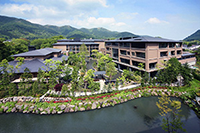 TOKYU Harvest Club VIALA HAKONE HISUI
TOKYU Harvest Club VIALA HAKONE HISUI| TNFD | Abbreviation for “Taskforce on Nature-related Financial Disclosures.” Launched in 2021 by four institutions: the United Nations Development Programme, the World Wildlife Fund, the United Nations Environment Programme - Finance Initiative and Global Canopy. Calls for the adequate assessment and disclosure of nature-related dependencies/impacts and risks/opportunities. |
|---|---|
| LEAP | Abbreviation for “Locate, Evaluate, Assess, Prepare.” Approach recommended by the TNFD to assist corporations and financial institutions with evaluating their nature-related risks/opportunities. Comprised of the four steps of “Locate” (locate the interface with nature), “Evaluate” (evaluate dependencies and impacts), “Assess” (assess material risks and opportunities) and “Prepare” (prepare to respond and report). |
| ENCORE | Tool for financial institutions developed by the UNEP Natural Capital Finance Alliance, or NCFA for short. Enables the assessment of the importance of dependencies and impacts on nature according to business category and the analysis of data such as distributions of ecosystem services. |
| SBT for Nature | Abbreviation for “Science Based Targets for Nature.” Initiative calling for the setting of targets with time limits that can be measured and executed based on the best available science with respect to the setting of nature capital-related goals by corporations. |
| Ecosystem integrity | Degree to which the composition, structure and functions of the ecosystem are within the scope of natural fluctuation. |
| KBA | Abbreviation for “Key Biodiversity Area.” Significant area serving as key to biodiversity conservation as selected according to international standards. |
| Biodiversity Intactness Index | Metric indicating remaining degree of biodiversity before and after land modification in the natural world when land utilization by humans and the accompanying effects on biodiversity are taken into consideration |
| Conservation priority level | Metric indicating level of conservation priority from the standpoint of biodiversity. |
| Water stress | Metric indicating level of stress on water at basins based on percentage of water consumption relative to water supply volumes at the basins. |
| Ecological network | Approach through which locations hosting superior natural conditions in the target region are positioned as biodiversity sites (core areas) while said core areas are mutually linked using ecological corridors in order to enable the migration and dispersion of wildlife. |
| Cultural services | Cultural services that people can obtain by coming into contact with nature and that impact them from aesthetic, spiritual, physiological and other aspects. |
| Regulating services | Services that control the environment through biodiversity. Examples are the effects gained through climate regulation, the mitigation of localized disasters, the inhibition of soil erosion, and the containment of pests and sickness within the ecosystem. |
| Biodiversity Action Plan (BAP) | Abbreviation for “Biodiversity Action Plan.” Action plan for biodiversity conservation on a state or organizational (including corporate) level. In the case of states, nations that entered the Convention on Biological Diversity (CBD) are requested to formulate a BAP pursuant to Article 6. |
| 30 by 30 | Target of conserving 30% of terrestrial and marine areas by 2030. Stated as Target 3 under the “Kunming-Montreal Global Biodiversity Framework” (GBF) that was adopted at the 15th Meeting of the Conference of the Parties to the UN Convention on Biological Diversity (COP15) that convened in December 2022. |
| OECM | Abbreviation for “Other Effective area based Conservation Measures.” Area certified the Ministry of the Environment as one in which biodiversity conservation measures are being taken regardless of original targets by various entities such as business operators, private organizations, individuals and regional public bodies and through the initiatives thereof. |
| Urban redevelopment systems | Systems of the Tokyo Metropolitan Government to facilitate the enticing of positive development that contributes to the improvement of the environment in the downtown area by relaxing regulations on form stipulated under the Building Standards Act, such as limitations on floor area ratio and slants. In contrast to these systems are architectural plans to make public contributions, such as those to secure public spaces. |
Recognizing that environmental issues including climate change and global s...
Goals, Initiatives, and Achievements Quantified CO₂ reduction targets ...
Targets in the investment process ① Electrical facility: Introdu...
Company position on public policy for mitigating climate change Tokyu La...
Tokyu Land Corporation implements the following management process as a cou...
Tokyu Fudosan Holdings measures the energy efficiency of all real estate pr...
In office buildings and commercial facilities operated and managed by Tokyu...
The Group works to reduce CO2 emissions in the office buildings it manages ...
The 356-unit Branz City Shinagawa Katsushima is a large condominium buildin...
Initiatives towards ZEB and ZEH TOKYU COMMUNITY Technology Training Cent...
Program to promote corporate value improvement through decarbon management ...
Third-party Independent Verification The Tokyu Fudosan Holdings Group re...
Tokyu Fudosan Holdings Group makes a commitment to environmental issues an ...
Tokyu Fudosan Holdings has in place the Sustainability Committee, comprisin...
Strategy Faced with mounting threats of climate change and environmental...
Risk management Identifying / assessing climate-related risks/opportunit...
Metrics and targets Climate change-related targets in our long-term GROU...
Tokyu Fudosan Holdings Group makes a commitment to environmental issues an ...
Planning and management at the project site Biodiversity Action Plan (BA...
Creation of “Invasive Alien Species Response Manual” According to the In...
The Group actively introduces greenery at its condominium, office and comme...
《Existing project》For example, at the roof terrace garden named Omohara For...
At "Tokyo Port City Takeshiba Office Tower", we are working on environmenta...
“Tambara Ski Park" has been working to protect ‘forest green tree frogs’, w...
Participation in biodiversity certification systems Systematic implement...
Obtained the highest rank (AAA) of "JHEP Certification The FUTAKO TAMAGA...
Disclosure of engagement on efforts to reduce loss of biodiversity Gover...
The Tokyu Fudosan Holdings Group has established environmental management a...
INTRODUCTION Introduction-Nature Positive as a Global Goal- Ami...
Nature-Related Information Disclosure in line with TNFD General...
Risk and impact management Risk and impact management ...
Goals, Initiatives, and Achievements Process targets to reduce or avoid ...
Tokyu Land Corporation has rigorous performance standards for its newly bui...
The Group's office buildings, commercial facilities and resorts manage and ...
Measurement of NOx, SOx, emissions According to the Air Pollution Contro...
Management Structure The Group has established the Sustainability Commit...
Process targets to reduce or avoid waste: Tokyu Land Corporation has set...
The Tokyu Fudosan Holdings Group is working to reduce waste through home re...
Ratio of establishments receiving environmental management certification ...
The Tokyu Fudosan Holdings Group is continuously working to reduce waste. ...
Use of LCA (Life Cycle Analysis) The Tokyu Fudosan Holdings is developin...
Management Structure The Group has established the Sustainability Commit...
Progress against previously set targets to reduce resource use: Quantifi...
Forming a reuse cycle for wood resources The Green Connection Project is...
The Tokyu Fudosan Holdings Group has invested in a company that promotes th...
Management Structure The Group has established the Sustainability Committe...
Water conservation measures Water management plan Tokyu Land Corporat...
Reducing water use with water saving systems and features The Tokyu ...
Initiatives Along the Tama River - Environmental Conservation of the River ...
Initiatives in water-scarce regions Engagement, water withdrawal, etc. ...
Business activities in water-scarce regions The Republic of Palau is chr...
Works with others Works with others to reduce water use Tokyu Fudosan...
Collaboration with other companies operating at same sites such as making u...
The number of incidents of non-compliance with water quality/quantity permi...
Third-party Independent Verification The Tokyu Fudosan Holdings Group re...
Goals, Initiatives, and Achievements Results on goals of acquisition of en...
Targets and performance on water usage from property portfolio Water Use...
Training and providing programs to raise employees' environmental awareness...
Tokyu Land Corporation distributes sustainable procurement policies to the ...
Tokyu Re・design Corporation conducts training every year for the managers a...
Tokyu Fudosan Holdings has introduced a green lease clause in some of the l...
Operating energy management systems together with tenants Tokyu Land Cor...
Tokyu Fudosan Hodings participate in the Environmental Management Committee...
Commitment to Green Field Development Commitment to Green Field Developm...
Measures to reduce energy and water consumption Aggregate energy data at...
Tokyu Community Corporation has been selected to be an MEMS aggregator as a...
Reducing water use with water saving systems and features The Tokyu ...
Reduction of water usage by using rainwater The office building "Kasumig...
As a member of the Keidanren Nature Conservation Council, Initiatives fo...
Tokyu Fudosan Holdings distributes the Sustainable Procurement Policy to it...
No-Deforestation Commitment No-Deforestation Commitment Much of plywo...